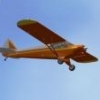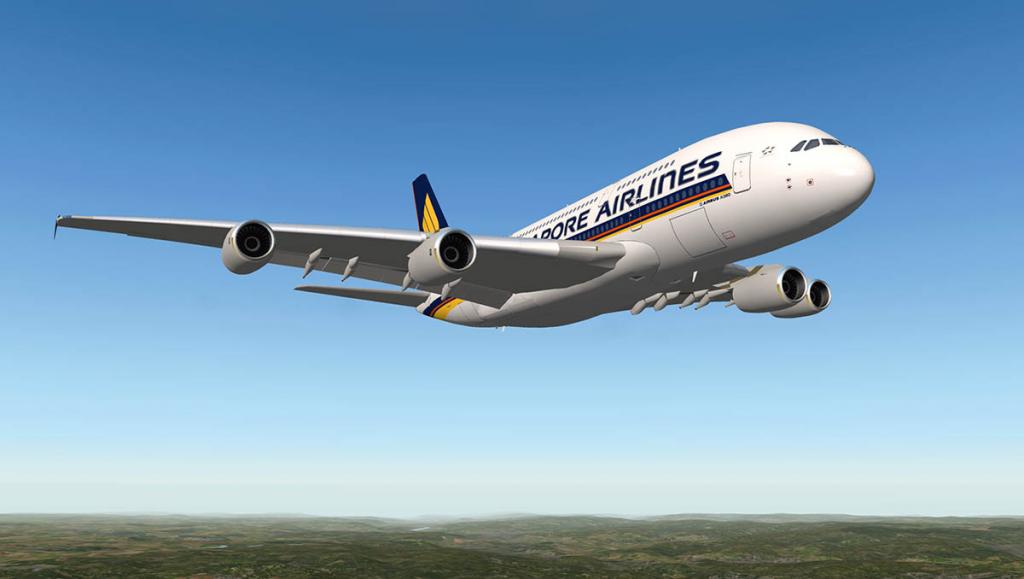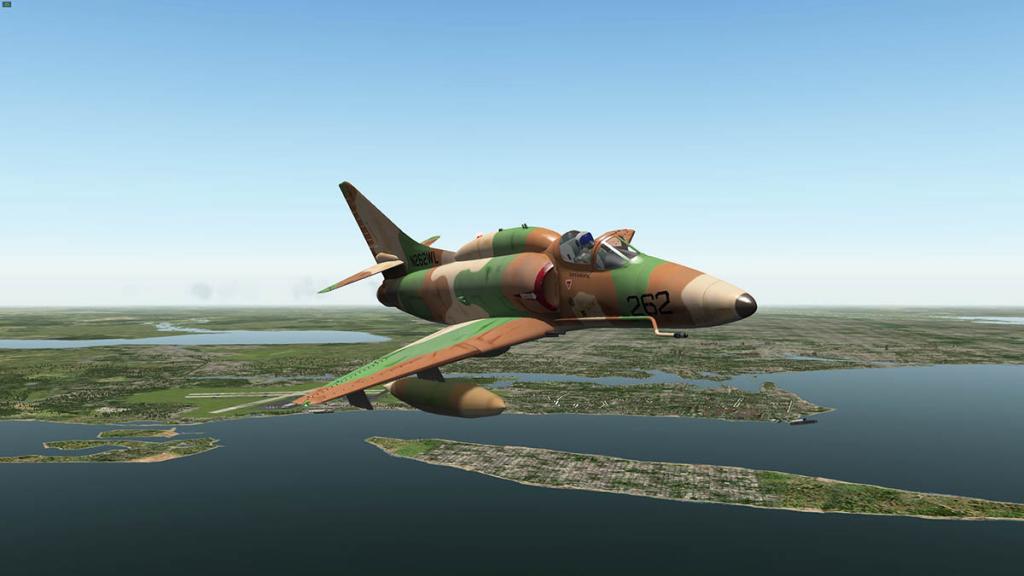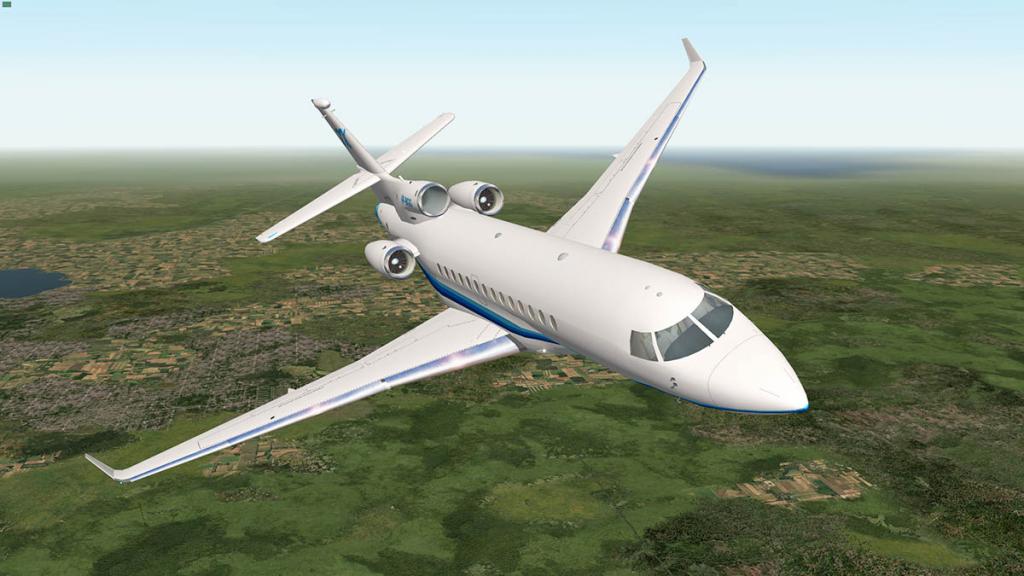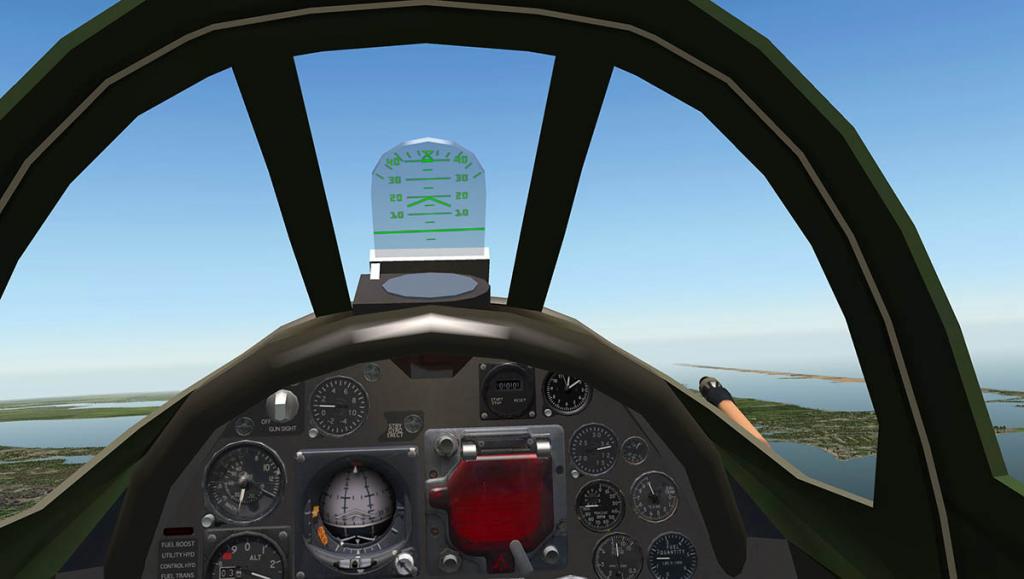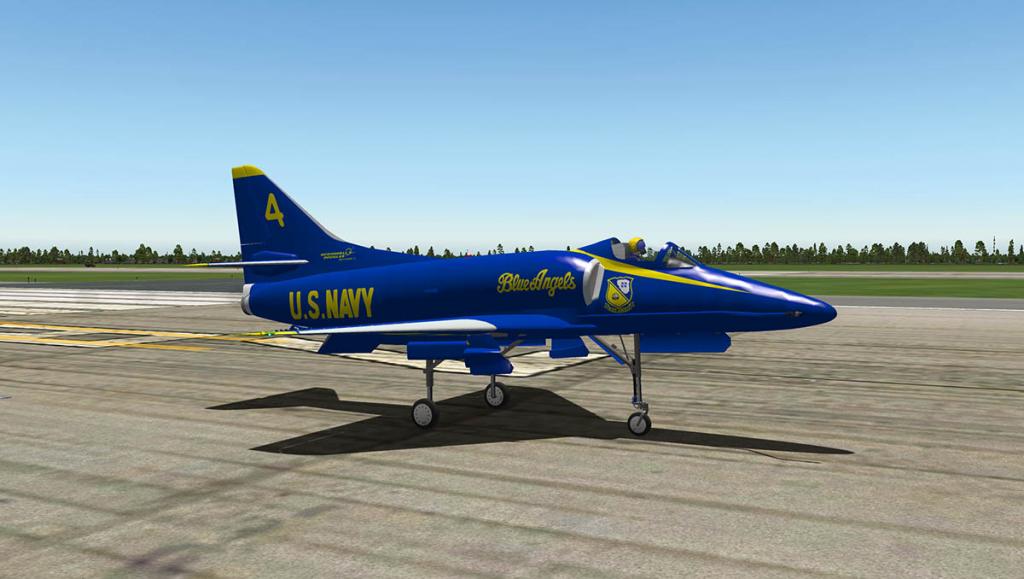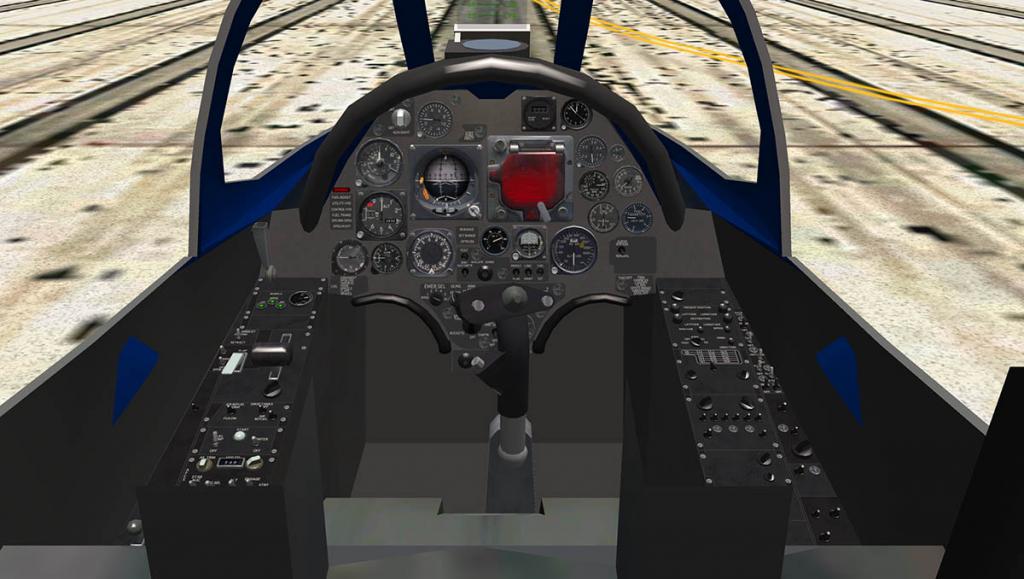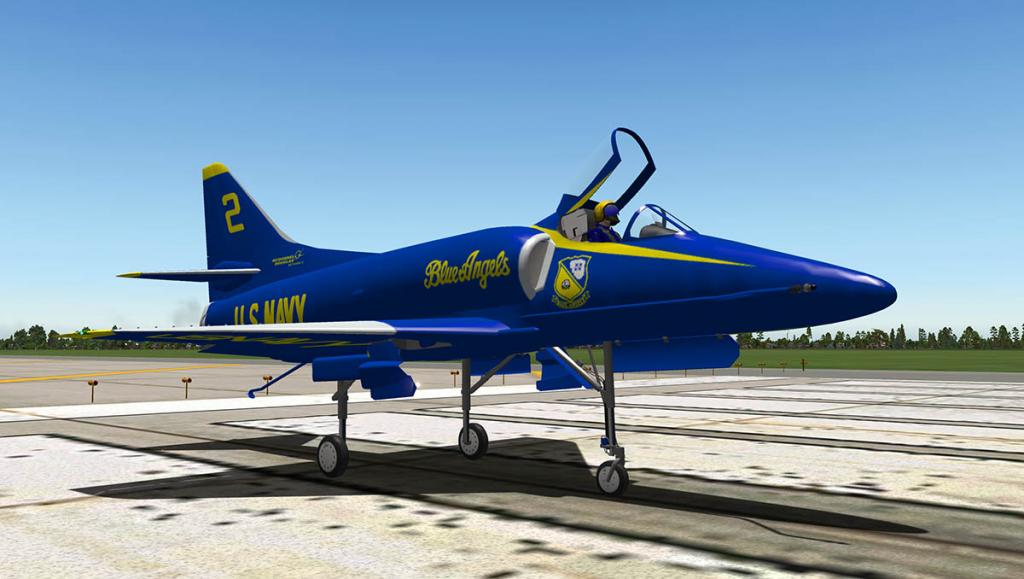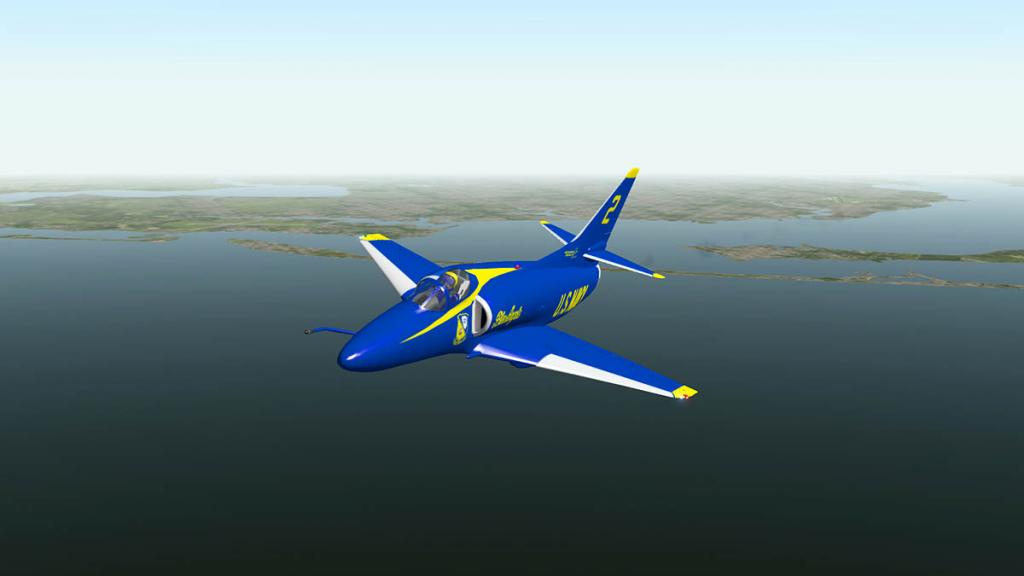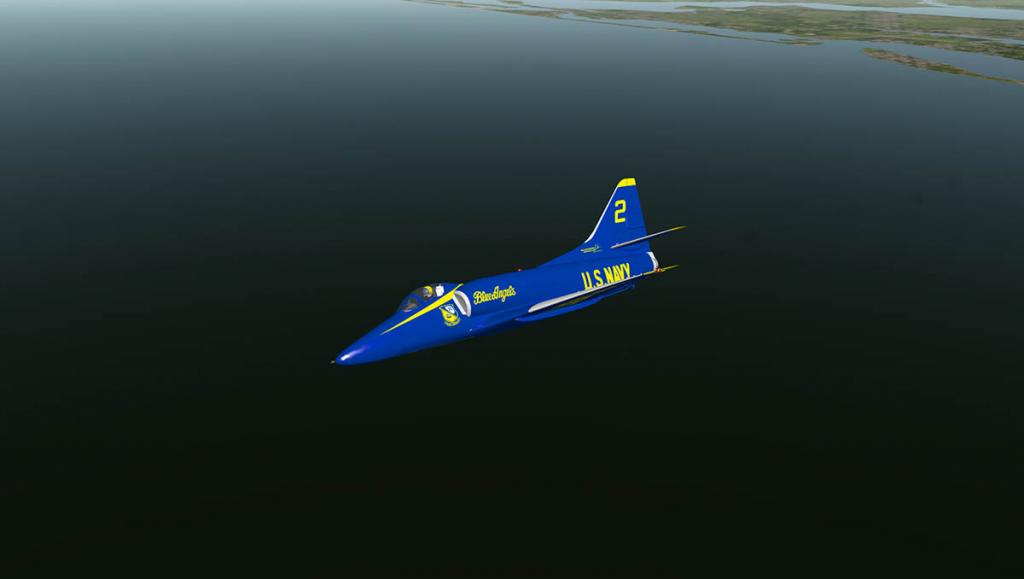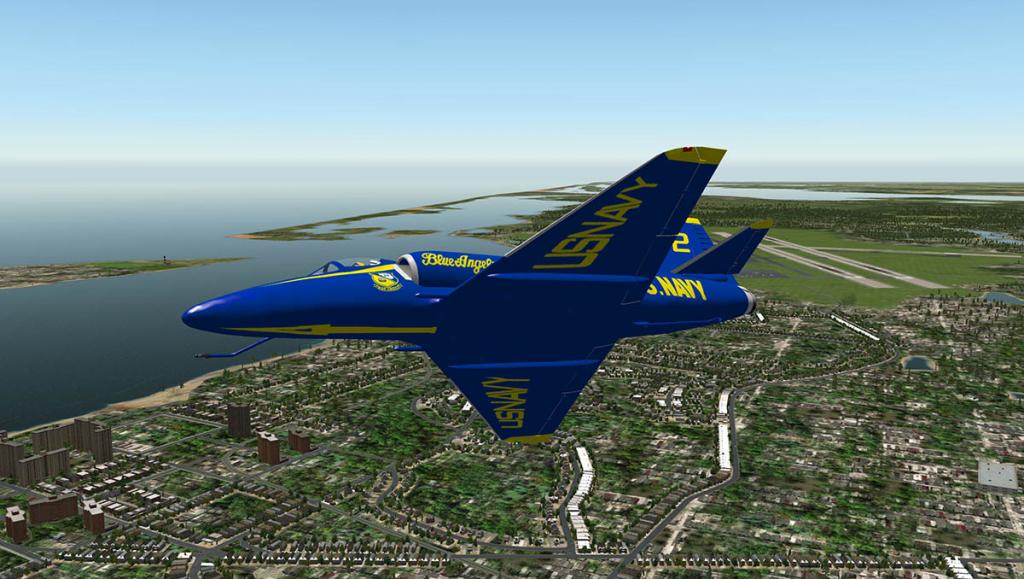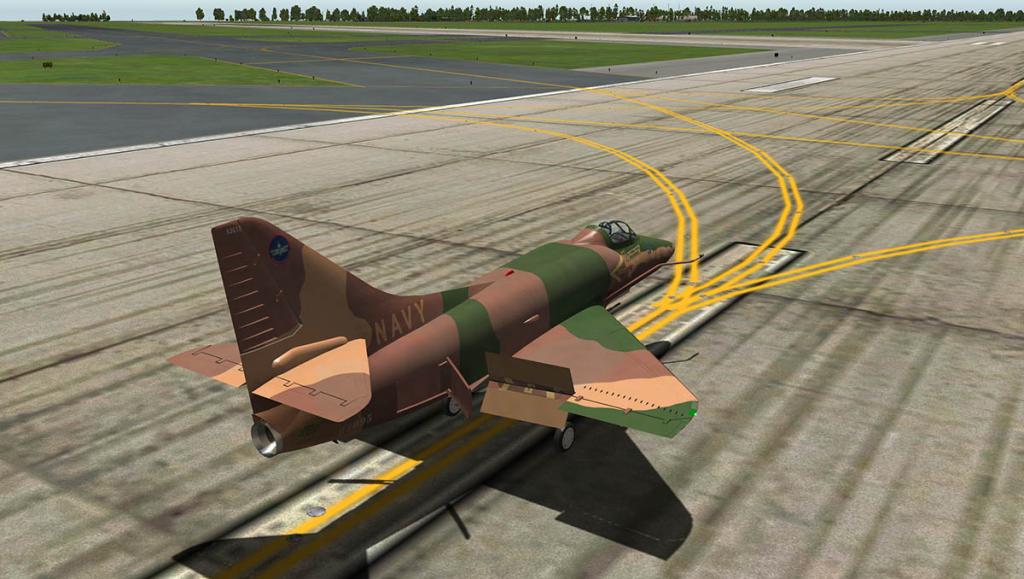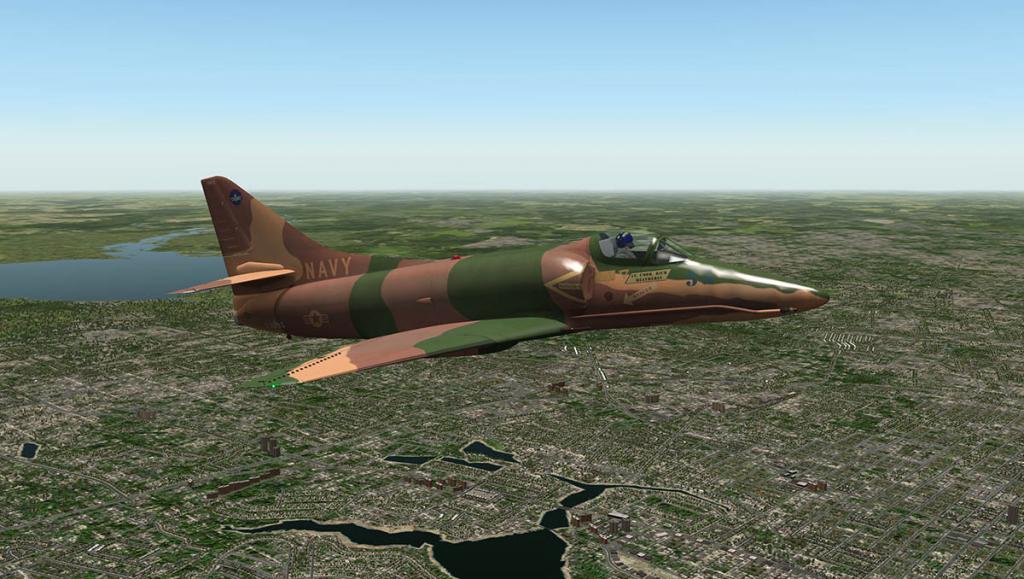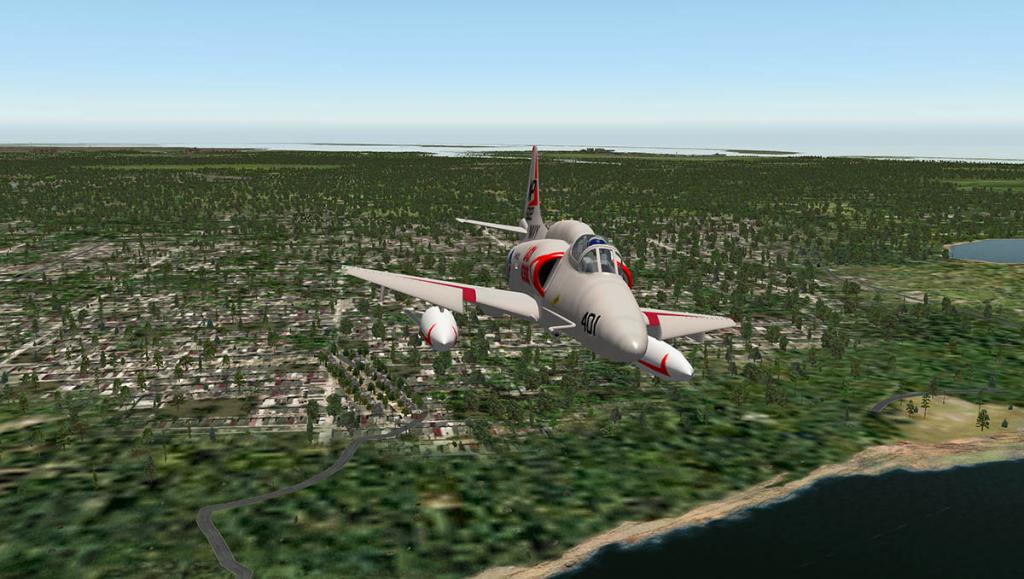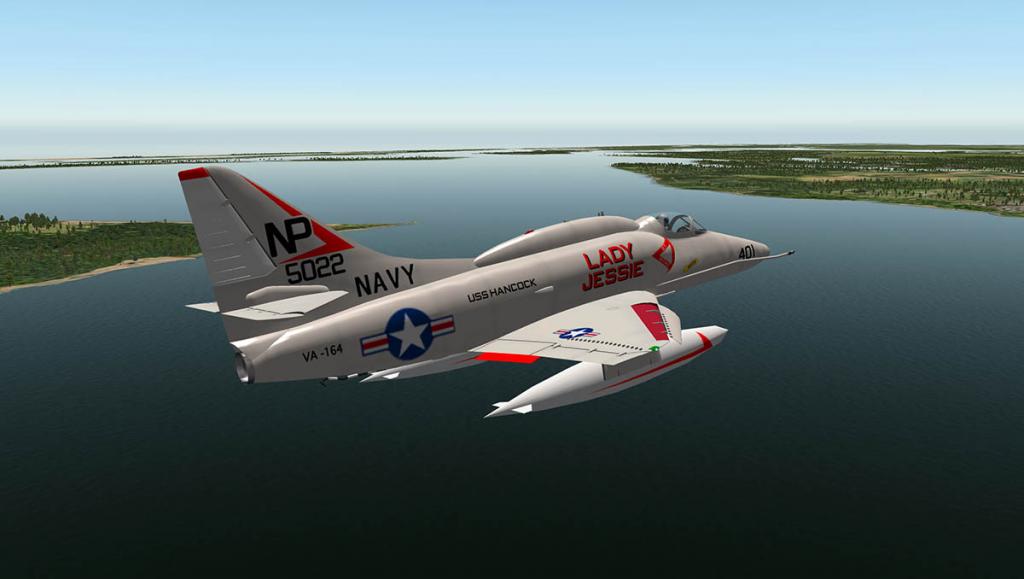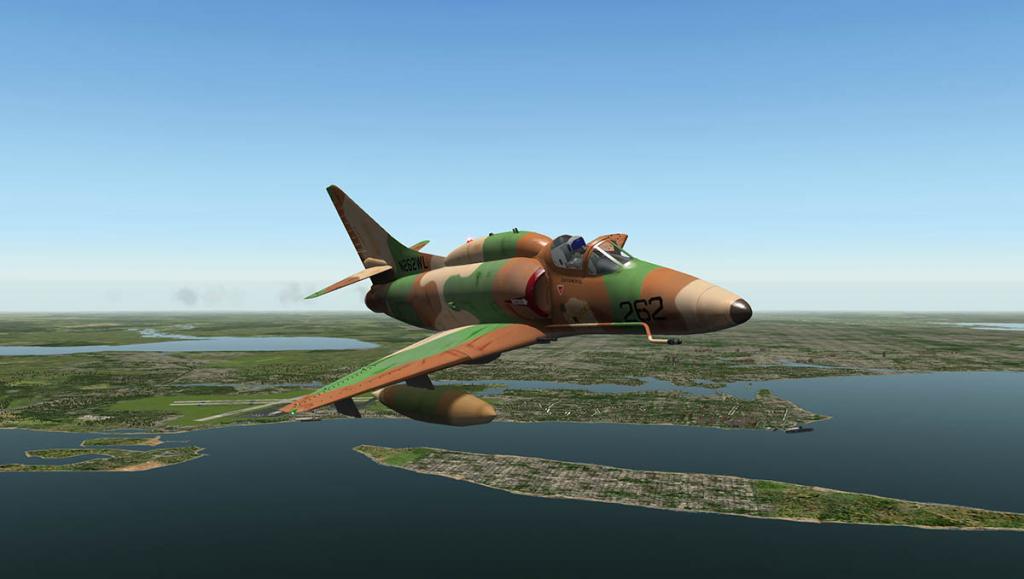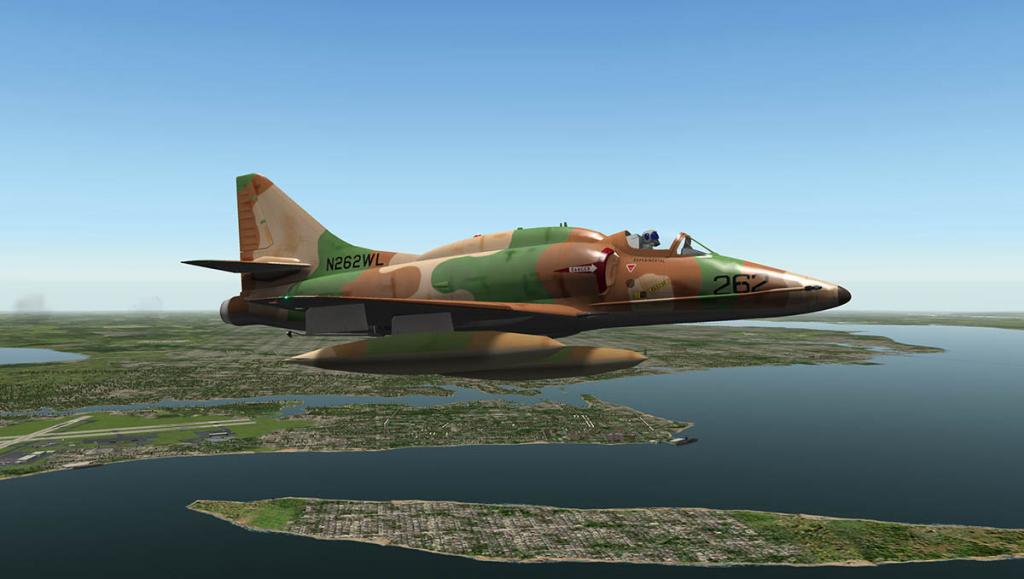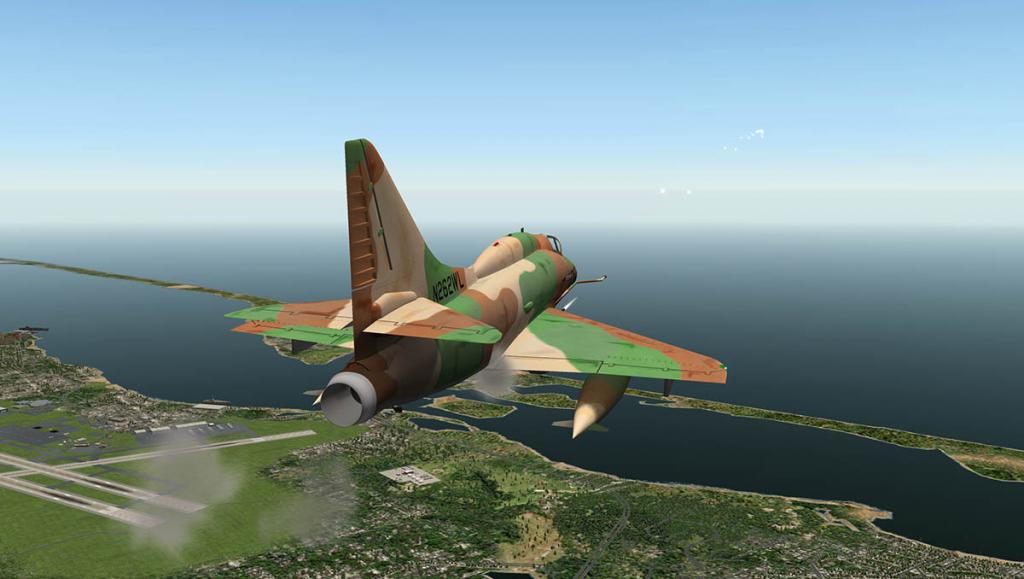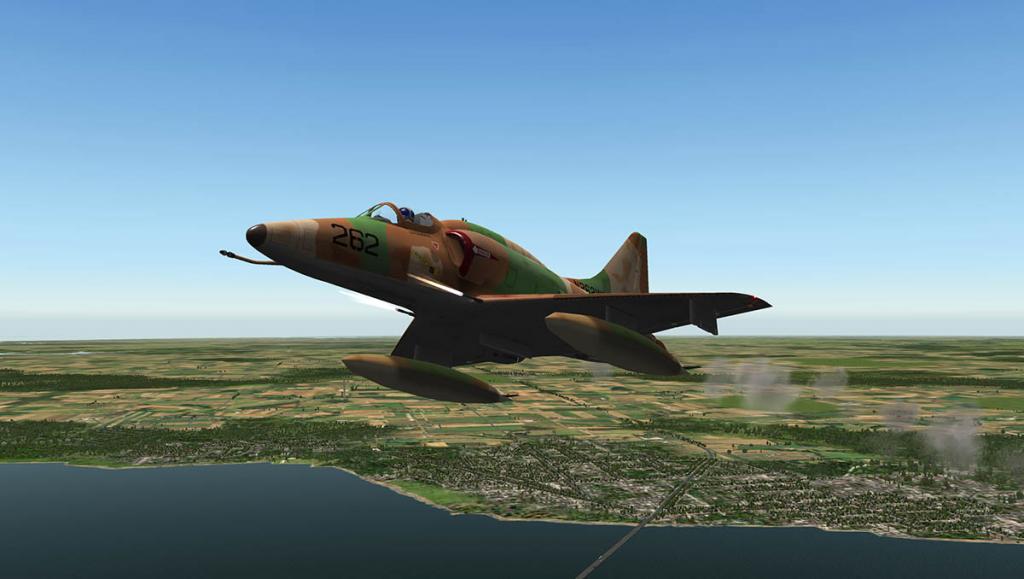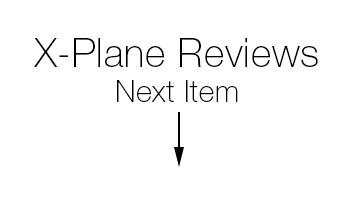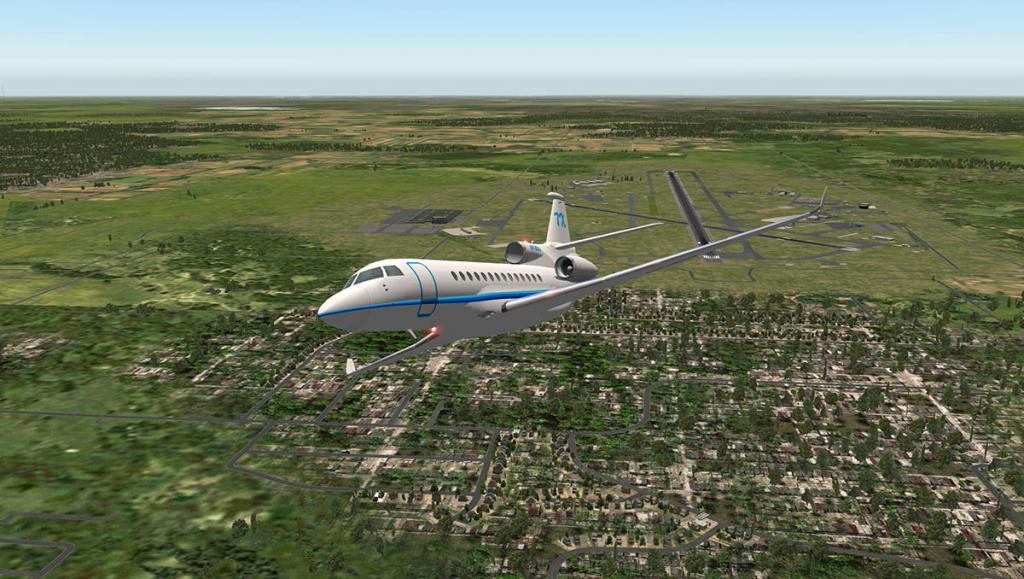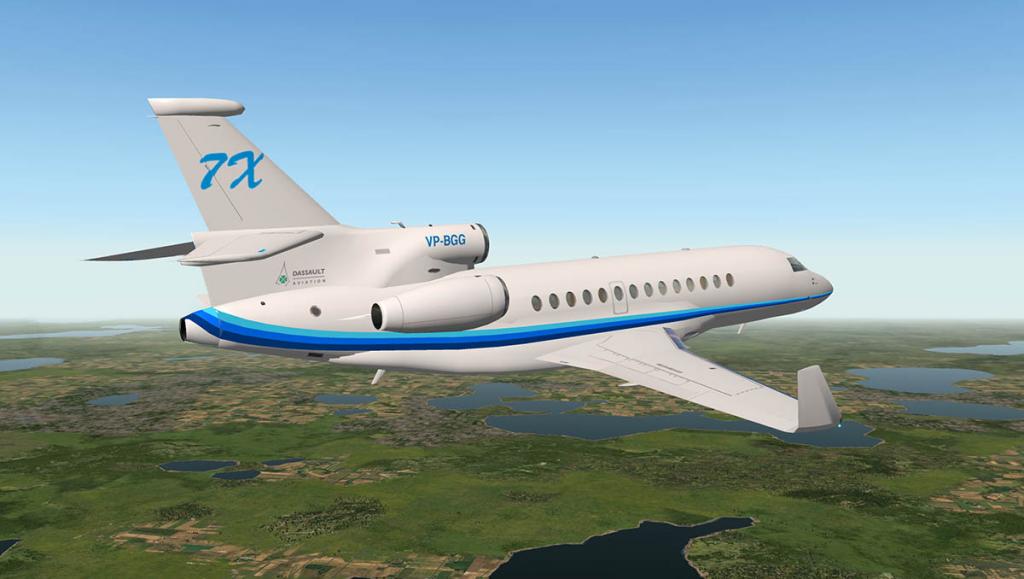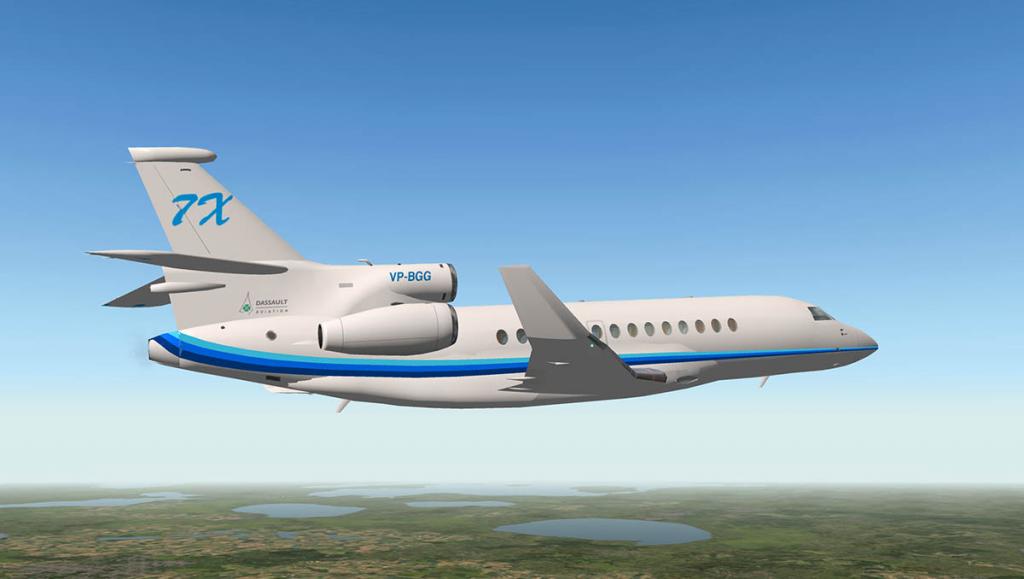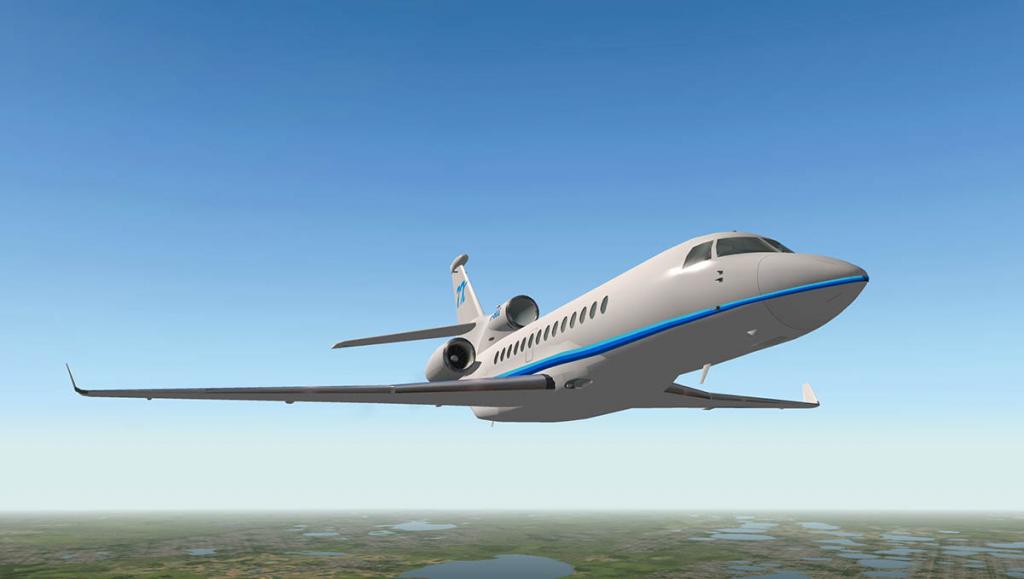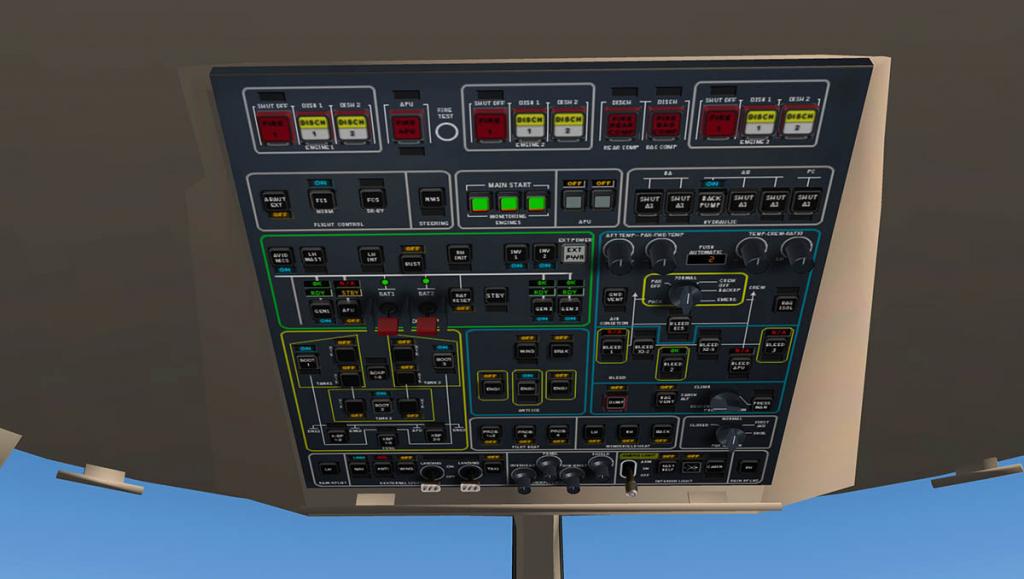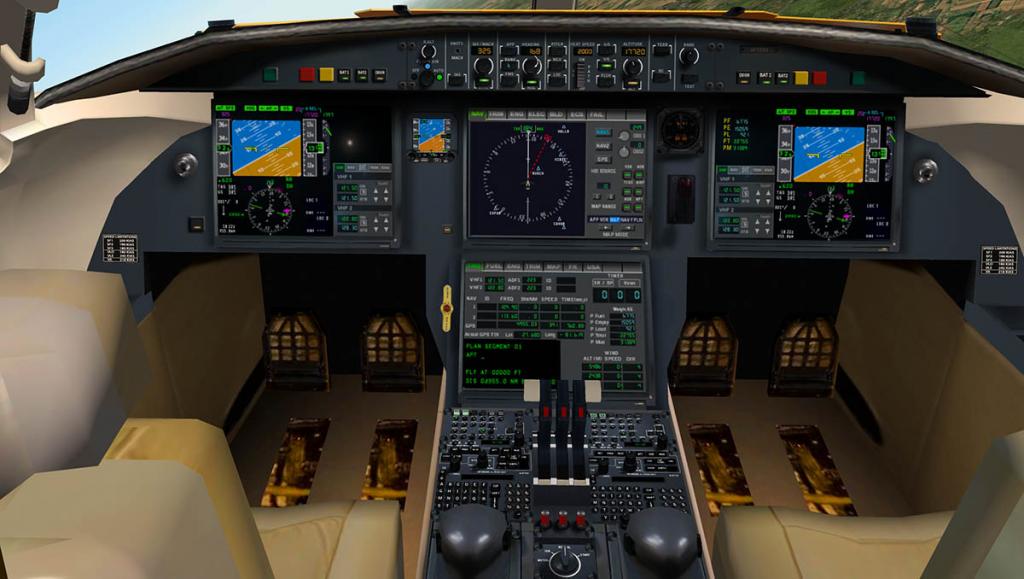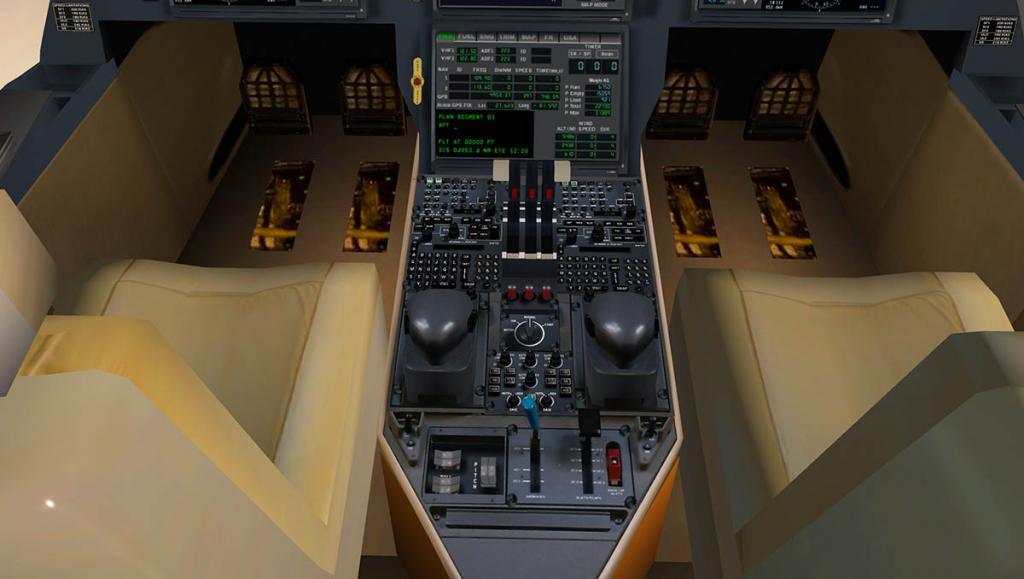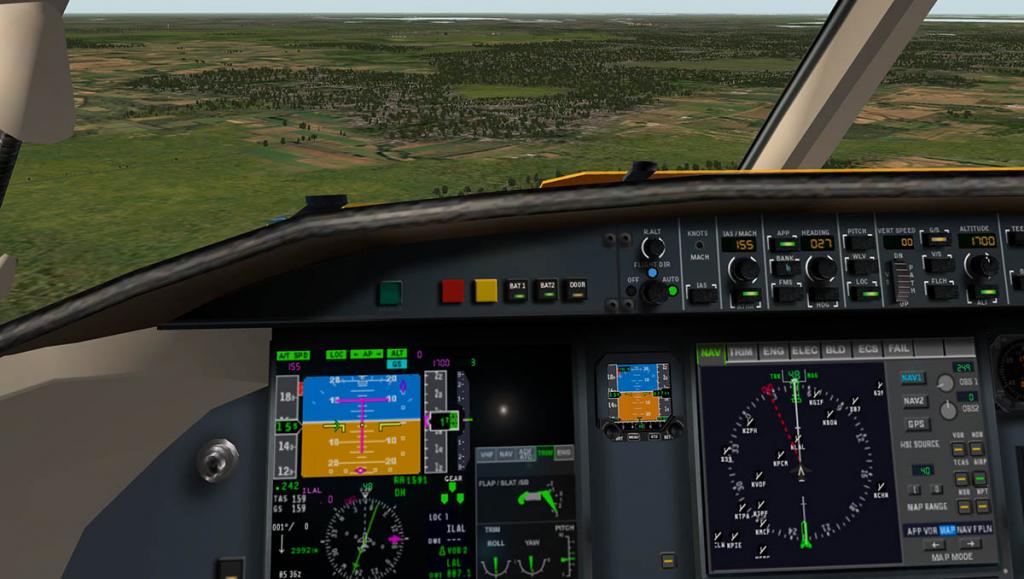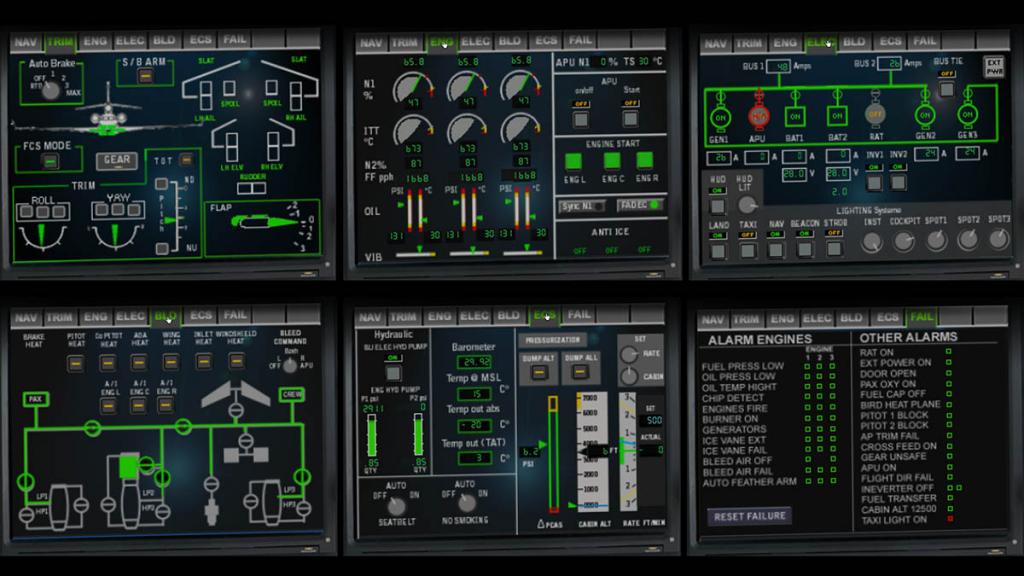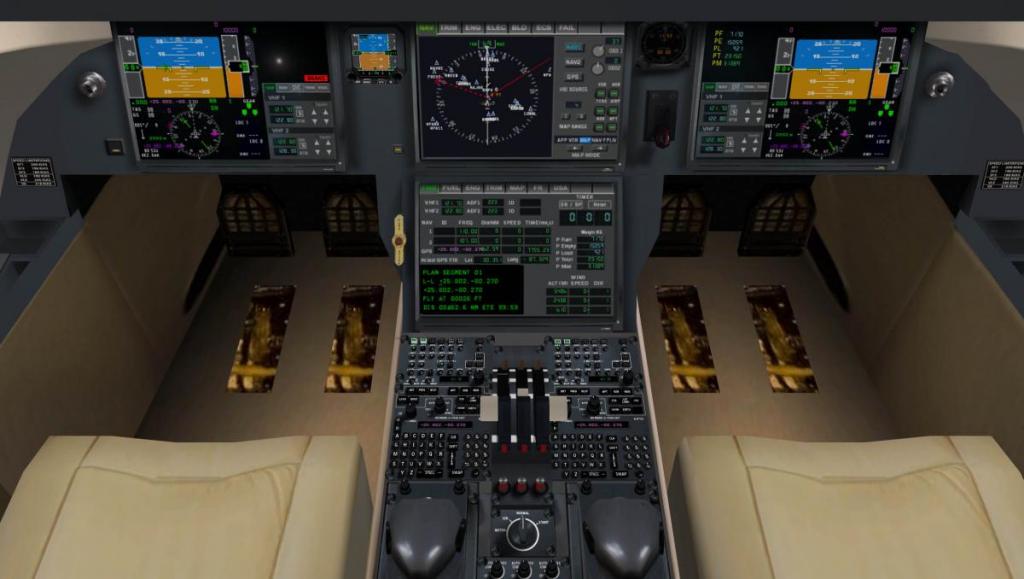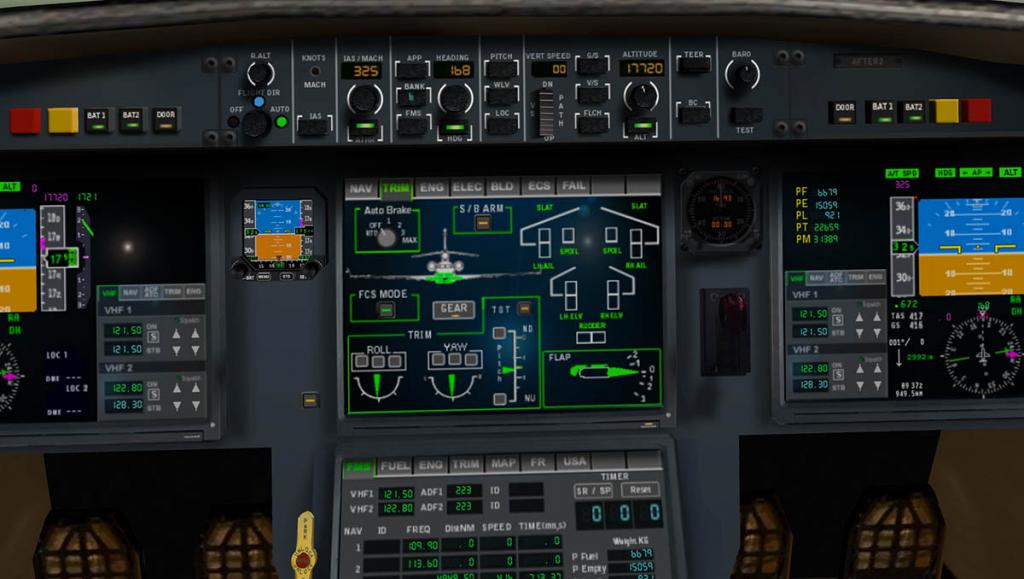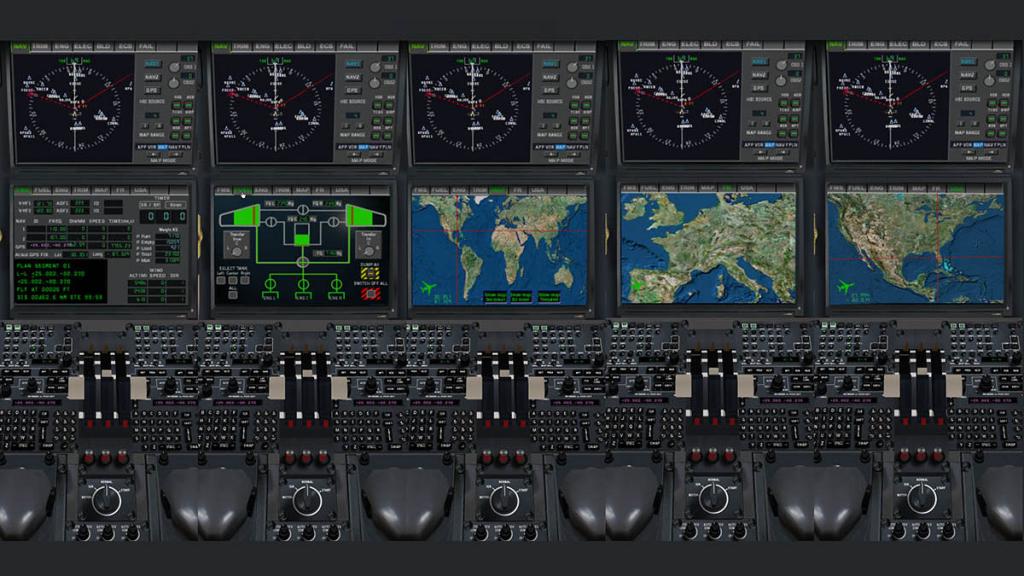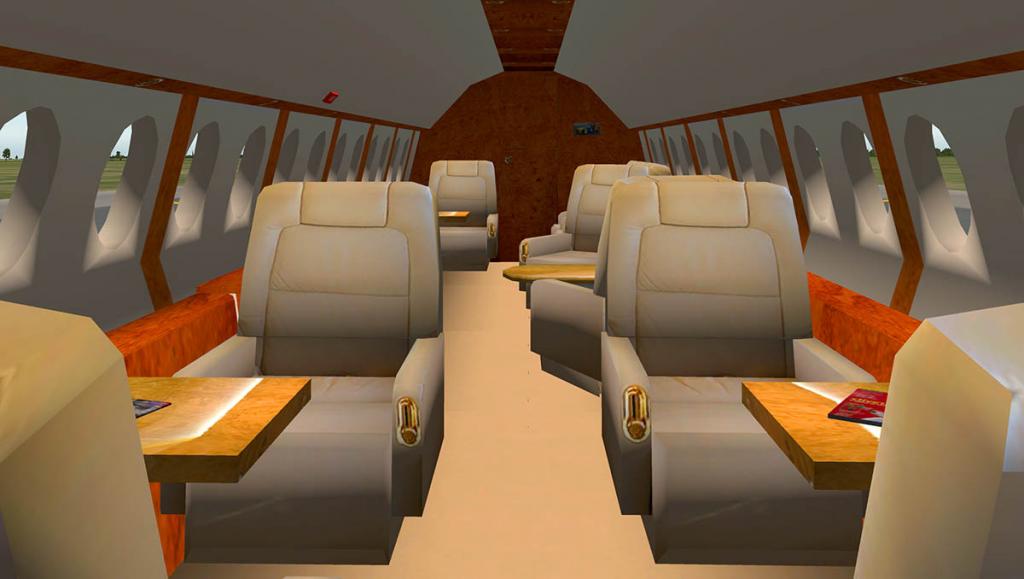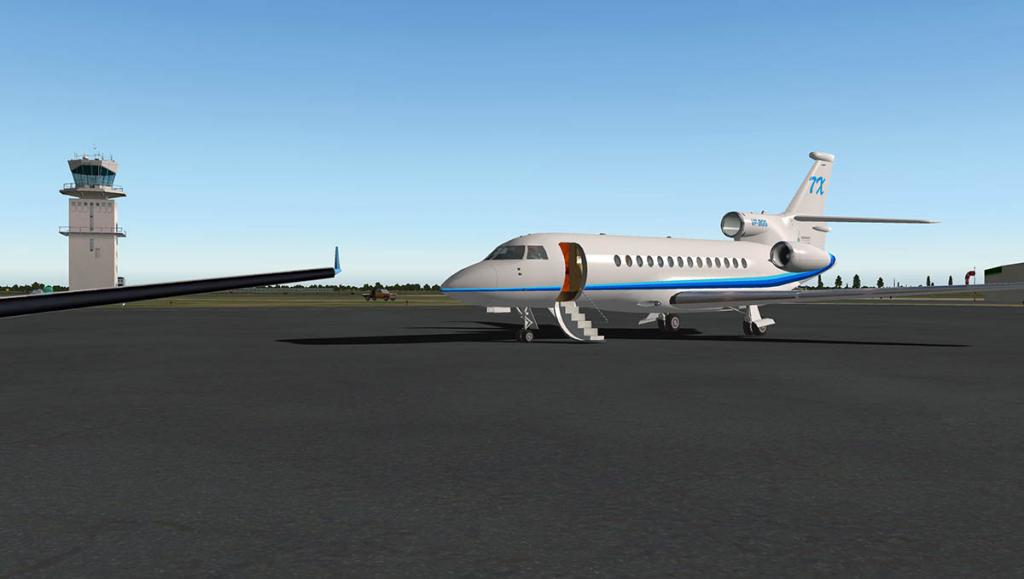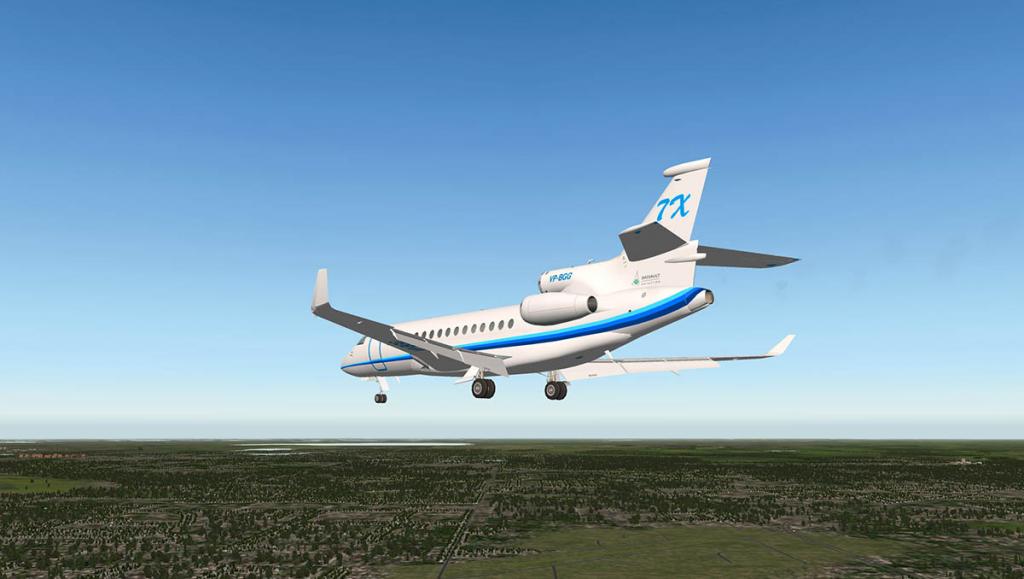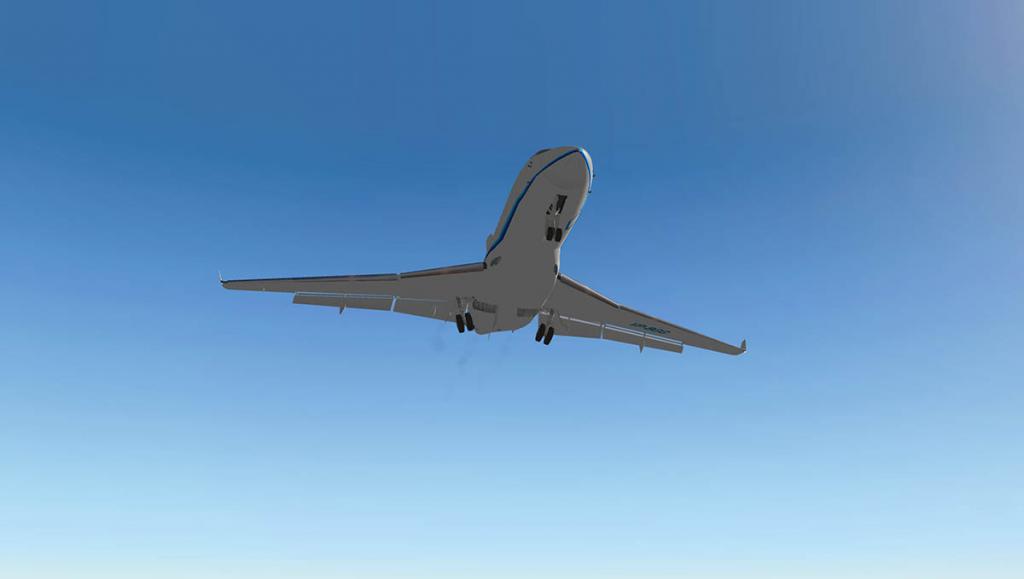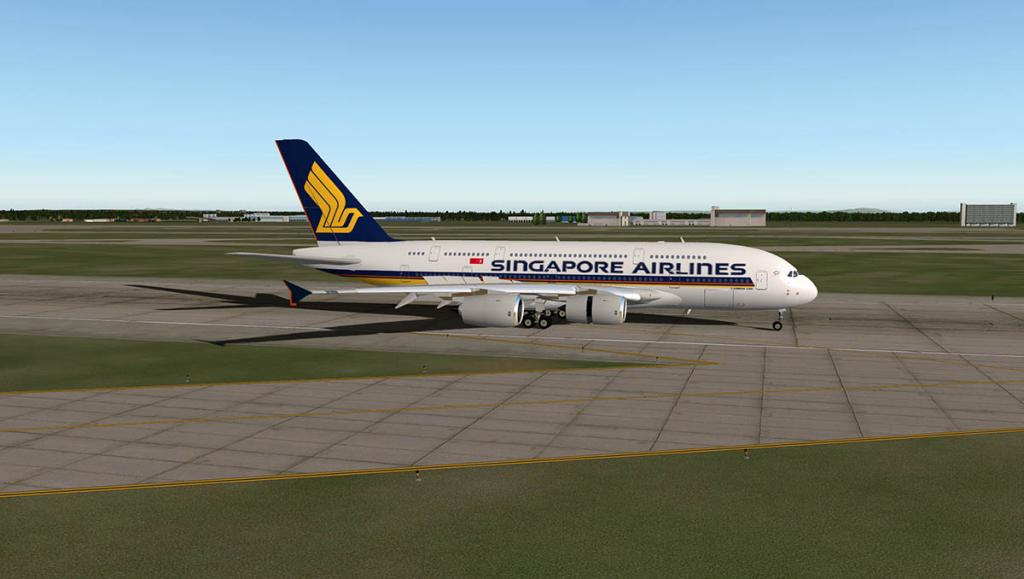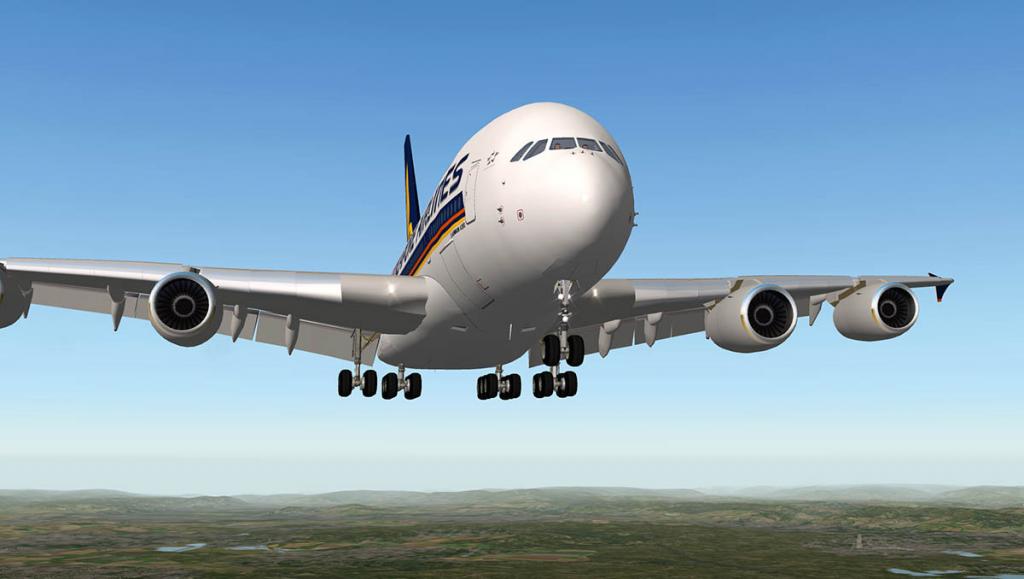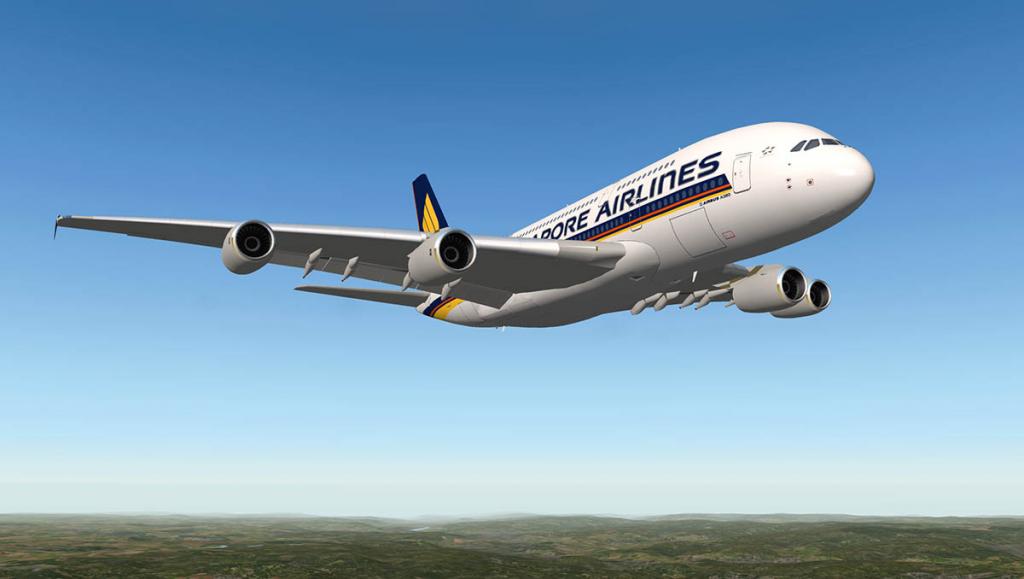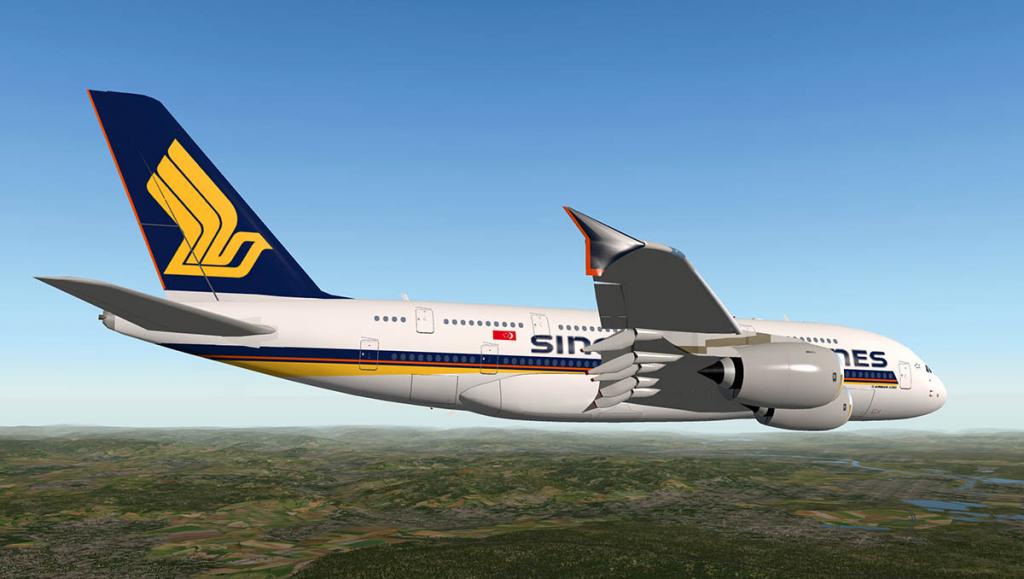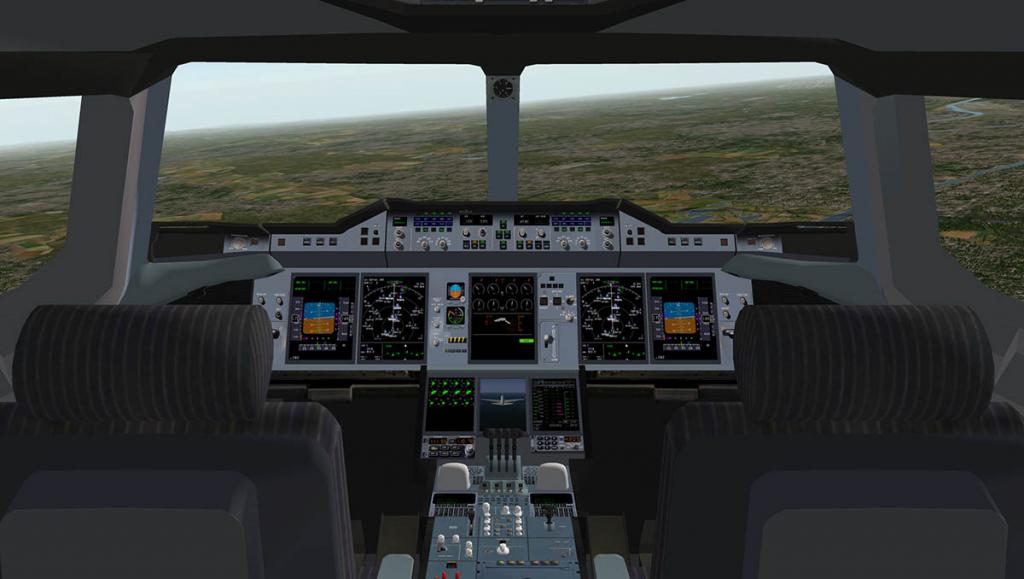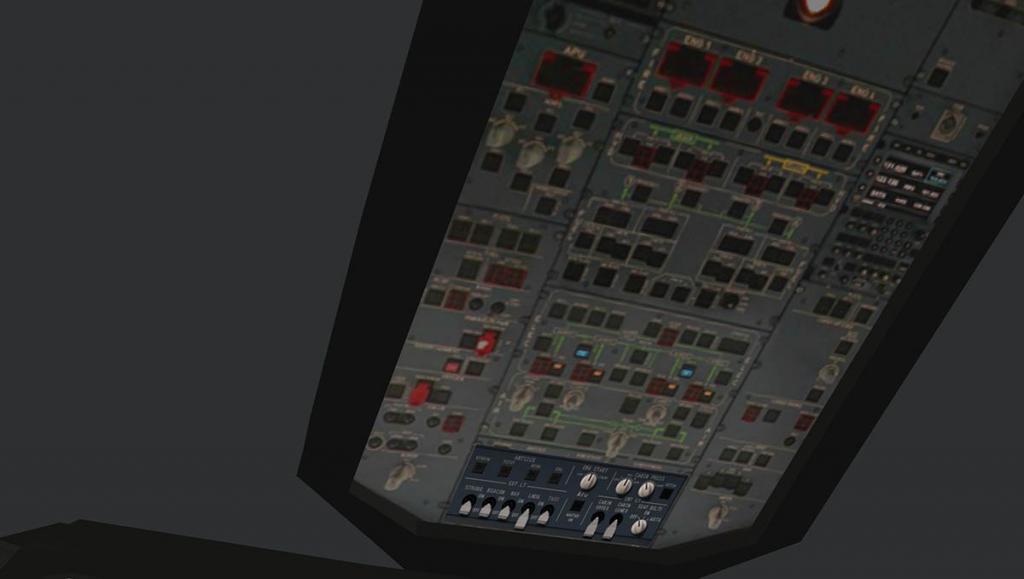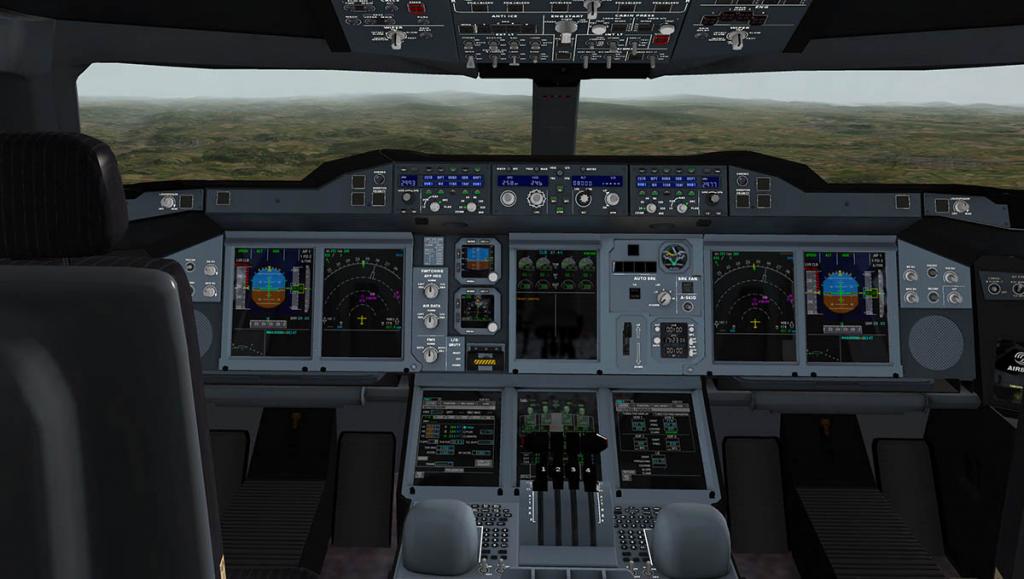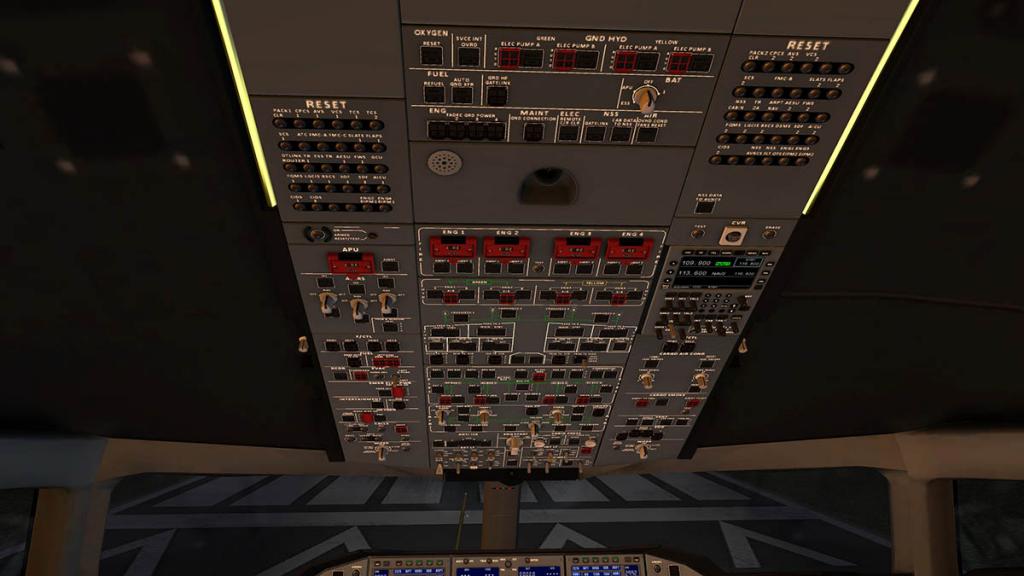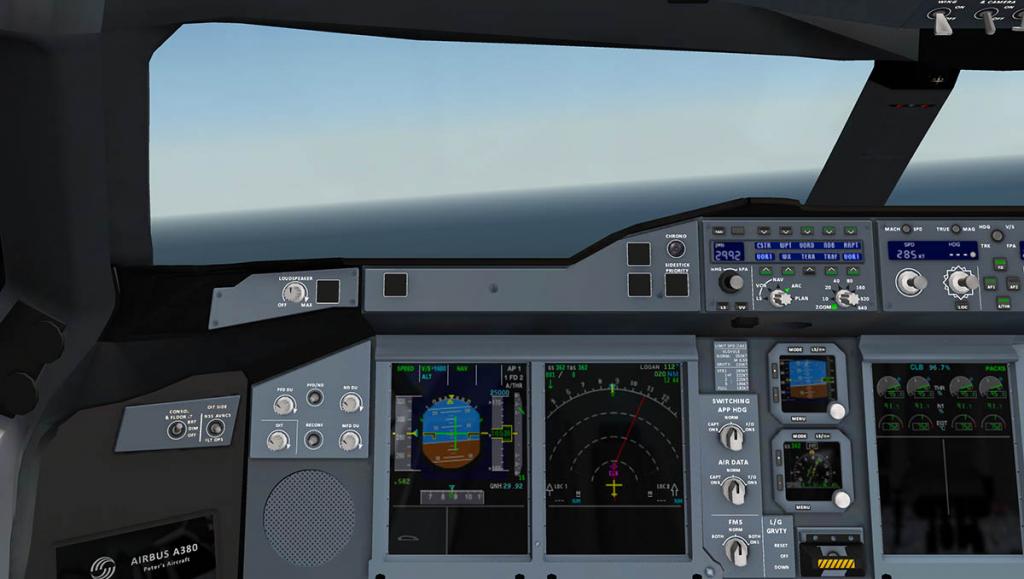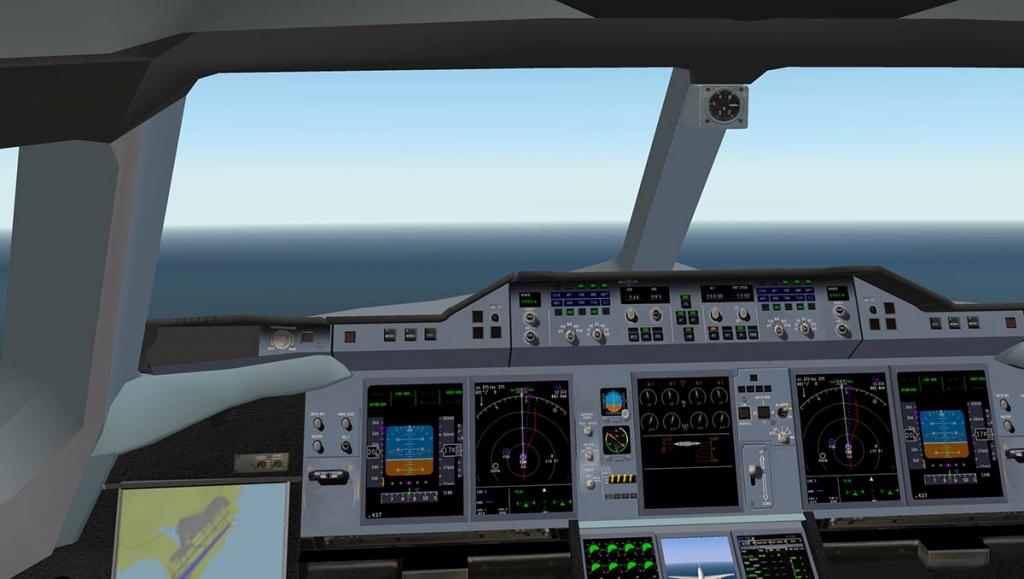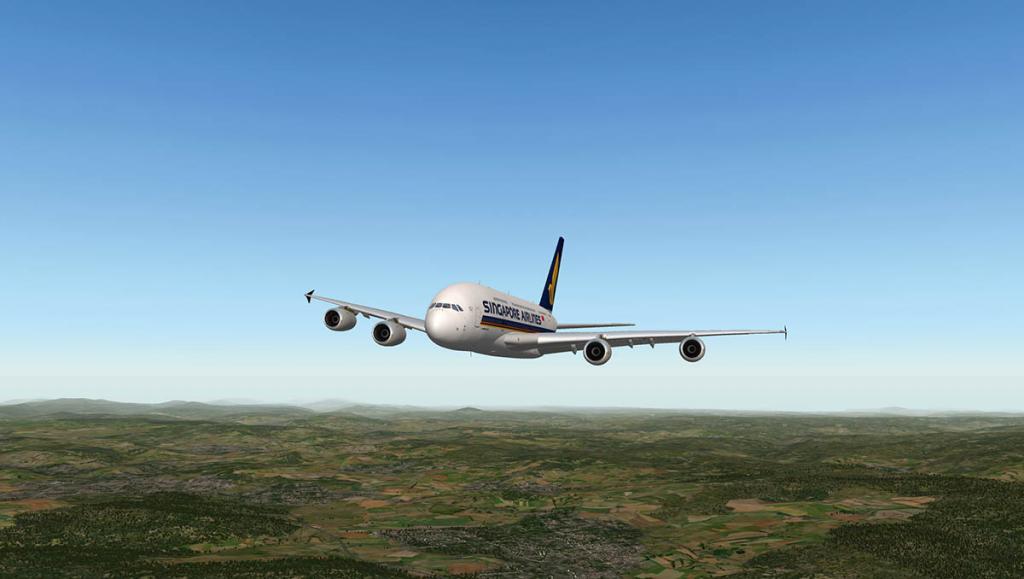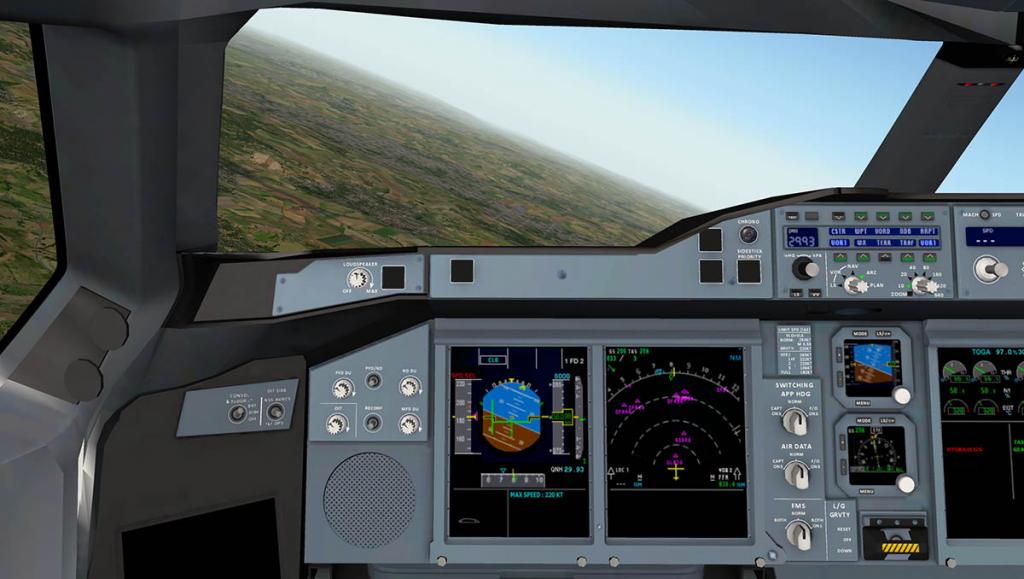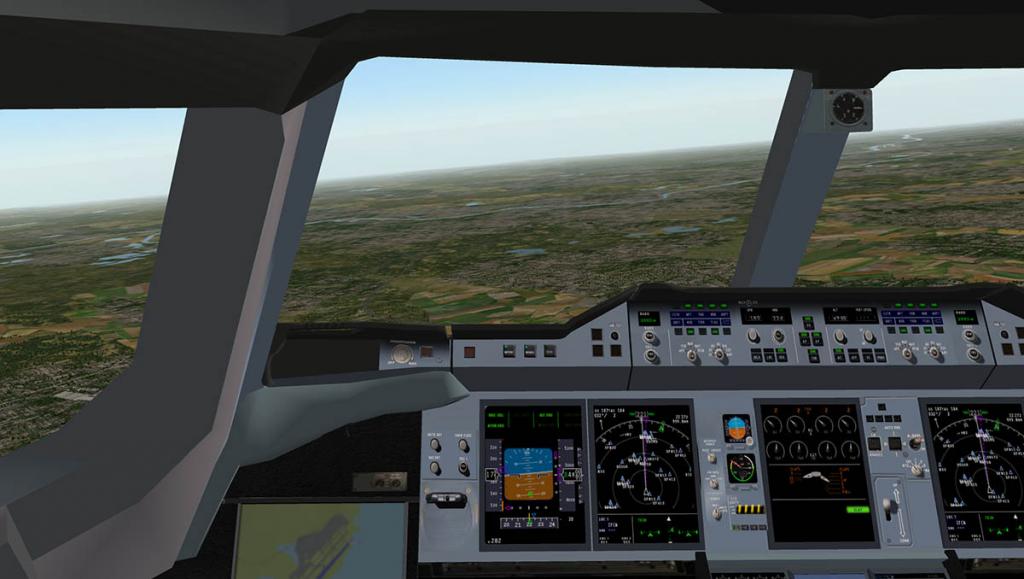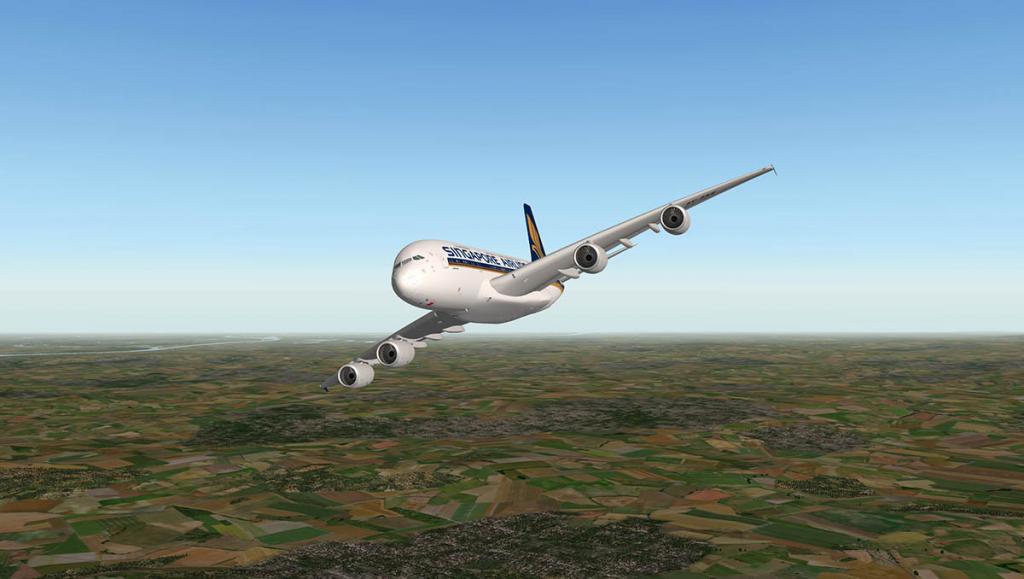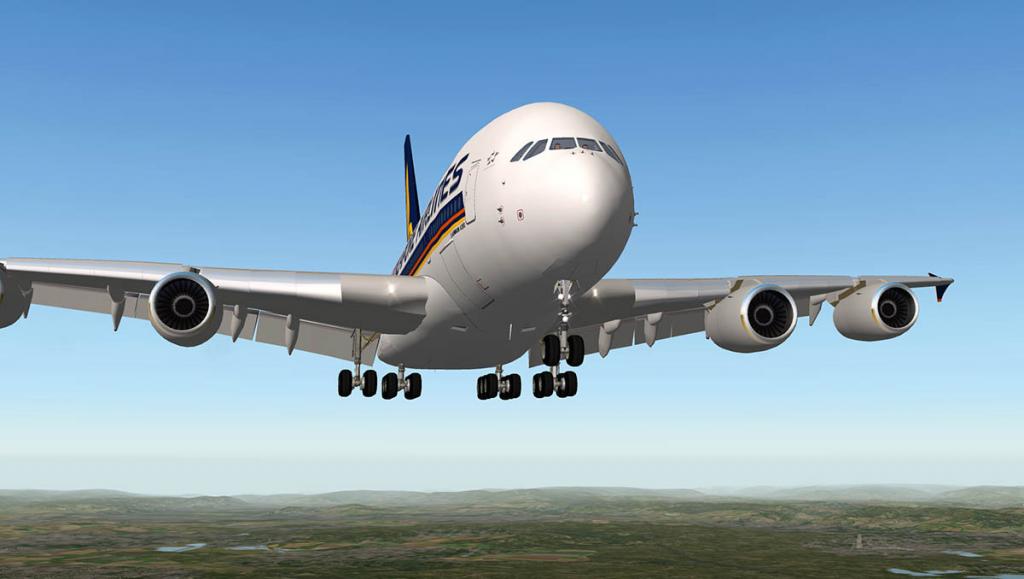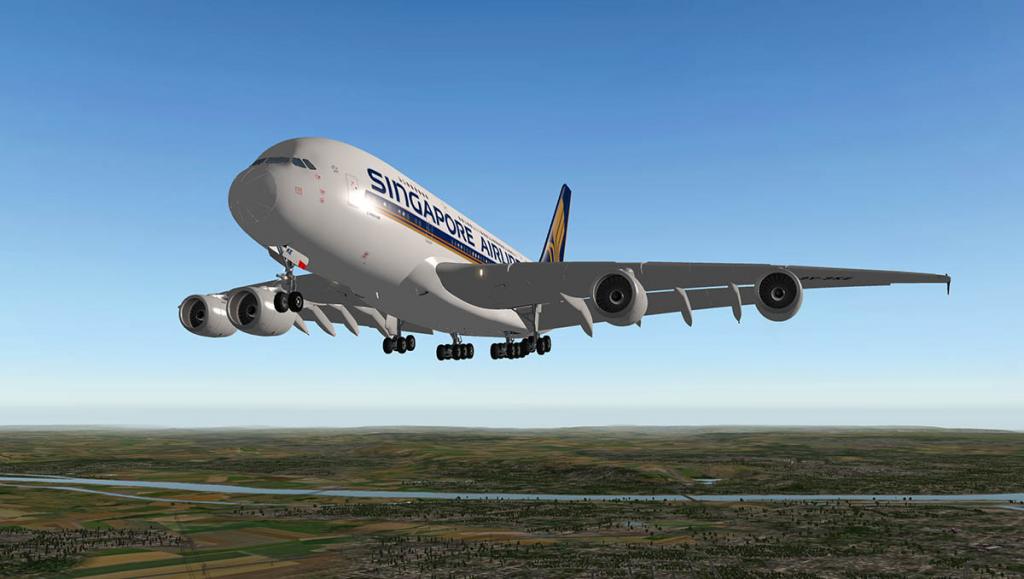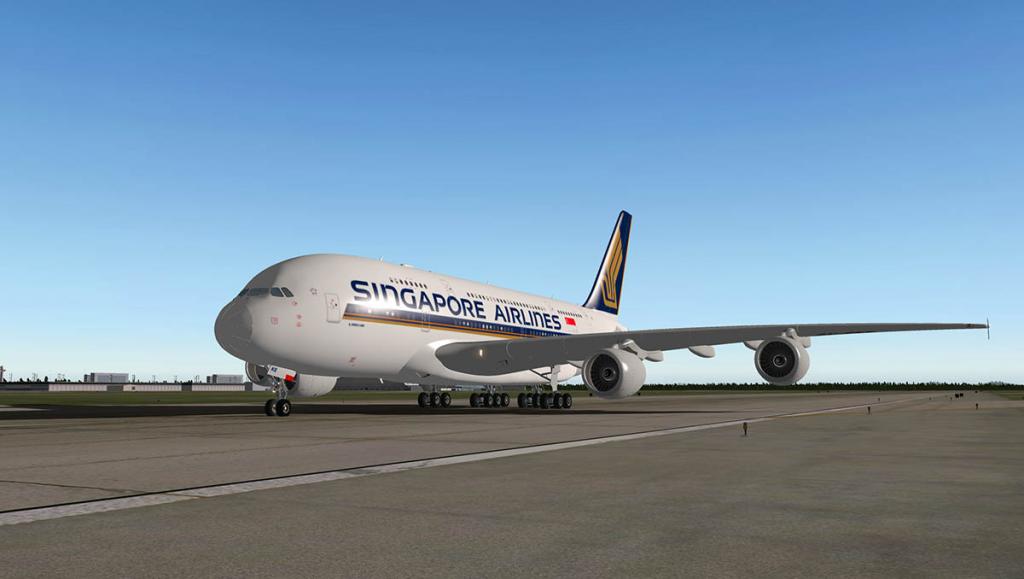Leaderboard
Popular Content
Showing content with the highest reputation on 08/05/14 in all areas
-
Aircraft Review : Blackshape Prime v1.3 by dmax3d The BlackShape Prime is a revolutionary ultralight aircraft developed by the italian BlackShape company of Monopoli, Italy, and features a full carbon-fibre frame which makes for an extremely strong and low weight aircraft. The Prime is an evolutionary design that began life as an all-wood ultra-light aircraft designed by Guiseppe Vidor of Italy. Then airplane became the Millennium Master, produced by Millennium Aircraft of Italy in 2007, and was first shown in its current form at an Aero show held in Friedrichshafen in 2009. The aircraft is made from pre-preg carbon fibre. And its 7.94 m (26.0 ft) span wing has an area of 9.96 m2 (107.2 sq ft) and double slotted flaps. The standard engine available is the 100 hp (75 kW) Rotax 912ULS four-stroke powerplant, driving a two bladed constant speed propeller, which gives it a maximum level speed of 300 km/h (186 mph) and a cruise speed of 275 km/h (171 mph). The Prime is classed as an "Ultralight". In the United States it is classed as an "Light Sport Aircraft", But you have to have a special license (rated) in the U.S. because the aircraft has a three leg retractable undercarriage. dmax3d dmax is well known to anyone who has purchased X-Plane because his Cirrus Jet, Stinson L5 Sentinel, Cessna 172 SP and Columbia 400 are part of the X-Plane10 default series that comes with the simulator. He is also well known for several aircraft including the Tecnam P92 and P2002 aircraftand great version of the Typhoon Eurofighter (free here). As modelling goes the Prime is excellent. It is hard to reproduce carbon-fibre or plastic looking aircraft because it can come off a little false (or just plasticky), The Prime does not look like that, it very well modelled. However the textures are not great in their resolution, so they can even when you are set at a high texture resolution come still across when close as a little jaggy and buzzy. A shame as the 3D work underneath is excellent. This is highlighted by the woven carbon-fibre matting on the cockpit tub which is excellent and of a high quality even if the weave is a little large. The same could be said for the entire interior which is very well executed in detail and design, highlights are the excellent control stick and well created seats for two. The rear seat is empty unless you increase the weight to over 265 lb. from the X-Plane "Aircraft/Weight and Fuel menu" and then a female passenger appears. Another highlight is the excellent bubble canopy. It looks very realistic and has a feel of quality about it. You open and close it with the 3d handle or the “canopy_toggle” function. The aircraft does have a very nice shape about it. and is quietly different from the normal style of ultra-light machine. From the rear the Prime reminds me of a BAE Hawk that the Red Arrows display team fly, the Prime is no jet of course but the tail shape and rear elevators do have the same ring to them leading on to the bubble canopy. The wings are also a lovely efficient shape that are beautifully modeled here. The edge wing lighting is well done in quality as well. The three stage flaps are 0° (neutral) - 10° (take off) 20° and full flap 30°. There is an extra -10° (negative "aps or up) stage as well that is used when at speed in flight to keep the nose level... This flap function is not on the real aircraft. Add together an extremely light airframe and a powerful engine for its class and the aircraft is going to perform well. there is a electronic propeller control. Which is a small toggle switch on the controller that can be used to manually adjust the propeller pitch instead of a mixture lever, which I set at 6000rpm. And with the quick on the power you will find that the takeoff rolls are extremely short at around 180 m to 200m to the point of takeoff and landing rolls are about the same distance. The Prime will climb easily at around 1500fpm with the gear down then accelerate to around 2000fpm with the gear retracted. I found the best band still at 1500fpm to still give you plenty of power in reserve. Cruising speed is around 200 Km/h (110kts) with top speed around 305 kmh (183 kts) but you will never go there. You feel tight and enclosed in the aircraft and with the passenger on board behind you it feels like you are sitting in a glider arrangement. The large display is very well designed by dmax. You have to be careful in that it is easy to concentrate more on the screen than on the horizon (It is so large), so you are soon fiddling around and flicking the aircraft around as it is so nimble, you will then find it is quite touchy in your hands, slowing down and finding the smoothness is something you will need to concentrate on to fly the aircraft well. Besides the main display there are the two beautiful Altimeter and Speed dials. Like most modern displays the buttons are located below the screen. The main one is the "pages" selector that has the selections of the - main flight display - engine conditions - Map. The MAP displays will show the usual - Approach - VOR - MAP- NAV and flightplan pages. with zoom located on the right hand side. Like all menu driven displays it will take a little time to navigate effectively around them all. But this system is more simplistic than most. All radio settings (Comm 1/VOR1/Transponder) are via the display. Liveries Liveries by and large are quite sparse?... The white one can be a basis for a livery, but there is a paintkit supplied. The Blue livery is the default and there is the "Millennium" livery that looks half completed? Features Their are two features that are interesting. First the escape parachute! If your engine conks out on the Prime then you will not die a thousand deaths... As you have an escape parachute! Pull off the safety tag off and then pull out the red handle and you will be pulled violently upwards by a large parachute. It is then a very serenely slow ride and float down until you hit the ground with a backbreaking thud! After a short stay in hospital you can then resume your flying career. Secondly are the wet, cold and frost features. Rain and ice effects on glass are becoming the normal in X-Plane. The effects here are one of the best I have seen yet. The rain drops are very clever in fitting around that lovely bubble canopy, go colder and you get mist and fog in there as well. When airborne the drops are moved on by the wind but the effects are still there, so it becomes very realistic. Note the excellent glow of the panel display screen on your forward view, again very realistic. Version 1.3 The changes in this new version are minimal but essential. New EFIS with multifunction buttons Autopilot fully integrated Fixed some issues with the mechanical altimeter Fixed magnetos switches: now work as expected Carb heat knob now is working Every one wondered why the carb heat didn't work when it is a standard feature in X-Plane, now that is now fixed. The autopilot is now more refined, but I still found it hard in the aspects of V/S vertical speed changes. get it wrong and the aircraft will zoom up to the next set altitude while you hang on, going down is very hard, and makes it hard work in the approach mode when wanting to lose altitude for a landing position. The aircraft is extremely light, So in the POH (supplied) you need an approach speed of 150Km/h (80 kts) before dropping the gear down and a maximum speed of 120 Km/h before you drop the flaps a notch. You will get a lot of drag, not only from the gear in the airstream, but the flaps kick in a fair amount as well. Adding in power a lot helps, but then you have the situation of a very light airframe pulling against a lot of drag. Add in some spice with some light winds (or worse bad crosswinds) and then you have a handful on the stick. Your approach speed is about 100 Km/h (54 kts) so you don't come come up on to the runway at a slow speed, but you slowly sort of gradually sort of get there... eventually. Once over the threshold it will nicely sit down and do a short roll to a stop, but are you sweating there a little? The lightweight is what makes the Prime fun. You have to fly this aircraft in the lower speeds with skill, but it also has the power when clean to go quite fast. Lighting You have two knobs to set the lighting. One for lighting the panel (Instruments) and one for lighting the cockpit. Between the two adjustments you can find the best conditions that suits you. Outside there is only one landing light and the standard Nav/strobe lights. _______________________________________________________ Summary An interesting aircraft that is a very light-weight design, but still extremely fast (for its class). Makes the Prime a great aircraft for buzzing around and enjoying a machine that is not only very modern in design but can at points be a challenge to master under very low speeds. Its is a fun machine is the best way to sum it up. Textures are average and the liveries feel like an afterthought, but the design and details were it counts are excellent and overall the aircraft is very good. At just under US$16 it is very good value as well. Installation : Blackshape Prime 1.3 is a download of 44mb and is expanded into your X-Plane Aircraft folder at 55.1mb. Some downloads have the issue of the EFIS and partial panel that only fills the entire 1920x1080 screen with no outside view in 2d? If you get this you can re-download or fix it yourself by opening the acf in PlaneMaker and go to: standard menu -> viewpoint window -> view tab and then check the "show cockpit obj in: 2-d forward panel views". Docs : 1 POH (70 Pages) and 1 QuickOperationHandbook (13 Pages) The Blackshape Prime v1.3 is now available from the X-Plane.Org Store. Blackshape Prime v1.3 Price is currently US$15.95 Technical Requirements: Windows Vista or Windows 7 (32 or 64 bits) or MAC OS 10.6(or higher) or Linux X-Plane 10.20 (or higher) - 32 and 64 bit compatible Cuurent version: 1.3 (last updated June 15th 2014) Developer Site: dmax3D _______________________________________________________ Review By Stephen Dutton 21st June 2014 Copyright©2014: X-Plane Reviews Review System Specifications: Computer System: - 2.66 Ghz Intel Core i5 iMac 27” - 6 Gb 1067 Mhz DDR3 - ATI Radeon HD 4850 512mb Software: - Mac OS Mavericks 10.9.2 - X-Plane 10 Global ver 10.22 (final) Addons - Saitek x52 Pro system Joystick and Throttle1 point
-
This is X-Plane Reviews! As X-Plane from Laminar Research expands and grows, Aircraft Simulation in all its different forms is now becoming a huge interest to many people in every part of the world... ... only of this July 2013 the X-Plane.Org then went past the record number of users registered of 250.000 users, that is a quarter of a million X-Plane users!... or Pilots. So It was only worthy and timely to have a site dedicated to reviewing and supplying you with the latest news of the ever expanding X-Plane universe. And so here is X-Plane Reviews, we will give you all the latest news and reviews with an insight into what is happening and what is worthy of your simulator interest. No doubt the last year has seen many exciting releases and changes outside and within the simulator, these announcements and releases will become even more prominent as the simulator moves ever forward and from this moment you will have another home to bookmark to access the right information of these great product releases and in-depth XPlane analysis. Items that will be covered by X-Plane Review will range from: News Add-on... Announcements - Development - Releases - Reviews and Updates Developer... Interviews Scenery... Free and Payware - Development - Reviews - Updates Laminar Research... Developments - Betas - Updates Comments and Columns from myself and many other commentators and X-Plane users. In fact anything that is connected to the X-Plane Simulator. Many will know myself from my news and reviews over on the X-Sim Reviews site (as Flightime56) and here you can join me with your own views and comments on the way you use and expand your simulator world. If you have anything newsworthy then contact me at : [email protected] If you are new to the X-Plane Simulator then you are in for a treat. Many new users to simulation are surprised on how deep the platform is, like a game it has many, many levels of involvement... but don't call simulation a game. The aim is of course to replicate and fly just like you do in the real aviation world and X-Plane recreates a whole virtual world for you to do so. The world you fly in is in real time and with real distances that covers the whole area of the earth. So first off, X-Plane can be very time consuming if you want to go long distances. But that does not mean you can not just hop in an aircraft and do a quick flight around your own backyard. Besides the huge variety of aircraft available from both purchase (payware) stores (like the .OrgStore), there are also hundreds of machines available for free(ware) downloads at many other sites to add to your hangar. But X-Plane does not stop there, you can download sceneries, plugins, new aircraft liveries and a huge variety of items that can fill out your own unique collection that makes up your own virtual aviation world. (a sort of minecraft for aviation), and it is addictive!... In fact X-Plane should have a sticker on the box that says (This product is extremely addictive!).... And X-Plane wants for you to be involved. You can create your own aircraft, sceneries and other items to add to the collection folders of other users, They will use your work in their virtual world and enjoy your contribution to the X-Plane experience. So, thanks for joining us here at X-Plane Reviews to expand your X-Plane experience. Stephen Dutton1 point
-
My Favorite Review (probably because I'm just a C206 freak) is the CT206H Turbo Stationair review. Located Here: Awesome Detail, great layout and the amount of detail in the pictures. Very good! I really enjoyed reading the play-by-play of the flight. It was very well put together. I really appreciate it when you bring up every slightest detail in the product you are reviewing. I would have never known* that the GPS530 was in a different folder! Giving us the history of the aircraft, as well as specs,and many, many pictures just put icing on the cake. When it comes to detail, you got it for your reviews! In the CT206H Review, you went all the way to awesome when you noted this: That was a cool fact that I would have never known. Carena *Now I do not own the C206 since I have v9. But I am a C206 fan, and I wanted to look at it more for information purposes. I do, however own other Carenado Aircraft. I was impressed that you took careful note of the navigational details of the flight. Examples are: "....and track North East until I was 17nm past to a final 180º track back to RWY 24 at 1200ft." "Using the DIR (Direct) mode on the GNS530 put me on a direct course with the fix, and then when close to NEGEL I did another DIR direct back to EICK and RWY 35...." Of course, the actual play-by-play was not vital information for us who do not fly that same route, but explaining the reasons why you did what you did, I found to be good information for owners of the aircraft to know to help them better know the GPS and IFR equipment of the airplane. I found it quite adventurous reading the play-by-play of the review's flight. I do think that this review fits the bill for the best. It's a great review for a great plane. Over all, I believe that this is my favorite review. I applaud you for the detail, adventure (of the flight) and the layout of the review. Tha onli thang i fownd rong was that u speld "sumery*" rong. Thanks for the great reviews my friend! Toby Rice P.S. I have seen some good posts on this thread. I hope mine (as from my heart as it is) is "up to snuff" for one of those addons you are offering. If I win, I will donate the aircraft to a pilot of an airline of AeroFlight Alliance, through a contest.1 point
-
Happy Birthday! : X-Plane Reviews is One Year Old...
AntonAy reacted to Daedalus1961 for a topic
Happy Birthday, like MadMckMax I would like to congratulate on a great site that I only just discovered, please keep up the good work.1 point -
Passion, just a lot of passion!1 point
-
The Dash is on sale now and again and certainly worth the purchase, I flew it only on the weekend and it is so good. No we have not reviewed it and yes we will do so. When we started last year a big part of the plan was to go into the back catalogue and relove the best and bring them out to show why and how good they still are. In that list is the Dash Q400, C-17 and the CRJ200, and X-Plane Reviews will certainly cover them in the next few months. The biggest surprise was that how little time we had to do this between current releases. We covered a few but we will try to move more very soon. SD1 point
-
Freeware Releases Roundup September 2013 : Skyhawk A4 - Falcon7X - Airbus A380 In late August and September 2013 we had a really huge choice of quality “freeware” aircraft released. You could say be spoilt for choice in the range and high quality workmanship that became available on the .Org. Of the releases I have picked three of the best to have a fly around and comment on in the Skyhawk A4, Falcon 7X and Riviere’s Airbus A380. Douglas A-4 Skyhawk 1.7 This version was designed by Ben Harber, aka Mid7night and was for sale on the X-Plane .OrgShop site. But now the aircraft has been decommissioned by Nicolas Taureau and put up for freeware on the .Org downloads. The Douglas A-4 Skyhawk is a carrier-capable attack aircraft developed for the United States Navy and United States Marine Corps. The delta winged, single-engined Skyhawk was designed and produced by Douglas Aircraft Company, and later by McDonnell Douglas. It was originally designated the A4D under the U.S. Navy’s pre-1962 designation system. The Skyhawk is a light-weight aircraft with a maximum takeoff weight of 24,500 pounds (11,100 kg) and has a top speed of more than 600 miles per hour (970 km/h). The aircraft’s five hard-points support a variety of missiles, bombs and other munitions and was capable of delivering nuclear weapons using a low altitude bombing system and a “loft” delivery technique. The A-4 was originally powered by the Wright J65 turbojet engine; from the A-4E onwards, the Pratt & Whitney J52 was used. The Navy issued a contract for the type on 12 June 1952, and the first prototype first flew from Edwards Air Force Base, California on 22 June 1954. Deliveries to Navy and Marine Corps squadrons (to VA-72 and VMA-224 respectively) commenced in late 1956. The Skyhawk remained in production until 1979, with 2,960 aircraft built, including 555 two-seat trainers. The last production A-4, an A-4M of Marine squadron (VMA-223) had the flags of all nations that operated the A-4 painted on its fuselage sides. A-4 Skyhawks played key roles in the Vietnam War, the Yom Kippur War, and the Falklands War (Argentina). There are four versions of the A-4 available in the 107.60mb download package. Blue Angels - flight demonstration squadron. It was formed in 1946. And the A - 4F Skyhawk was the demonstrator aircraft between December 1974 – November 1986. The aircraft design is very good and well done but it is now showing its design age in the modeling and liveries department. The cockpit (on all versions) is 3d and very well created with an opening canopy and dropping tail hook. On the Blue Angels aircraft you can pick your own number on the tail by changing the liveries. A-4F Jester - The aircraft of “TOP GUN” fame. Air Combat Maneuvering (ACM) training brought on with the establishment of the Navy Fighter Weapons School (TOPGUN) in 1969, the availability of A-4 Skyhawks in both the Instrument RAGs and Composite Squadrons at the master jet bases presented a ready resource of the nimble Skyhawks that had become the TOPGUN preferred surrogate for the MiG-17. Here the air-brakes are activated with split wing and fuselage opening air-brakes. Lady Jessie - Recreation of historical aircraft. This is the Naval version of the Skyhawk, with the humpback blister and wing fuel tanks. The tanks were designed for a wheels up landing, and most Skyhawks carried them. Note - the excellent forward leading edge spoiler, and the air-brake/flap arrangement that drops down under the wing. BAE - Recreation of experimental model. You can feel how agile this aircraft was to fly, you are just a finger and thumb on the stick and it will just maneuver by just your light touch and feel. No wonder pilots could feel part as one with the aircraft and the reason for its longevity and success. If you like killing things you can arm the cannons and fire away, but your supplies don’t last very long. Overall a great aircraft and one savor and now available for a free download: Douglas A-4 Skyhawk 1.7 Dassault Falcon7X The Falcon7X by after, Won the "Best Aircraft of September" on the .Org monthly Poll. This is a great version of the Personal Jet that is almost payware quality. It is not a completely new file but an updated version for X-Plane10 from v9.510. The Dassault Falcon 7X is a large-cabin, long range business jet manufactured by Dassault Aviation. It is the first fully fly-by-wire business jet. It is also equipped with the same avionics suite, the Honeywell Primus EPIC “Enhanced Avionics System” (EASy), that was used on the Falcon 900EX and later on the Falcon 2000EX. The Falcon 7X is notable for its extensive use of computer-aided design, the manufacturer claiming it to be the “first aircraft to be designed entirely on a virtual platform” using Dassault Systemes’ CATIA and PLM products. It is also unusual in having an S-duct central engine, and is one of only two trijets currently in production, the other being the Dassault Falcon 900. It was also the first production Falcon jet to offer winglets. First Flight was on the 5 May 2005, The first 7X, MSN05, entered service on June 15, 2007. Maximum speed: 953 km/h (515 knots, 593 mph), Cruise speed: 900 km/h (486 knots, 559 mph), Range: 11,000 km (5,940 nm)8 passengers, Service ceiling: 14935 m (51,000 ft) At first glance the Falcon 7X feels like a very good payware project. It was updated from the v9 aircraft and quite considerably so for X-Plane10. Outwardly the design work is excellent and the modeling is first-rate. The cockpit (3d) is excellent and very functional, the centre console is as good as anything else and well detailed. Most of the upgrade work has centred on the displays and systems, and the central display is fully functional. Quite comprehensive in their detail are the center screens, the lower upper tabbed screen shows you your Nav, Trim, Engine, Electrical, Bleed, ECS and Failure options. The lower screens main layout is your FMS settings and Navigation Inputs. And then Fuel status and consumption. The next two tabs are the same as the upper screen in Engine and Trim and finally there are three MAP/GPS positions in MAP, FR (France) and USA (Local). The systems are quite deep in operation and the aircraft is excellent just for these systems alone. The Cabin is well fitted out as well with club seating and tables (a, la, Challenger 300) and the front door opens back on Terra Firma. It flies very well as well. Nice to the controls, fast with an enormous range of which you can cross any ocean or continent and in all counts it is an excellent aircraft. But the Falcon7X doesn’t reach payware quality yet, as it just falls short... But however this is a project still in progress and still bound for payware and to reach that goal then some issues will have to be reviewed. Like the main cockpit panels are a mixture of sharp and fuzzy labeling that annoys after awhile. You would put up with this in XP8 or XP9 for payware, but you want to feel it needs to be better than it is, even now with such a lot of considerable detailing and screen functionality already completed. The outer aircraft design are parts beautifully done (like the leading edge and rear flaps systems), but let down by the poor tires that make the aircraft wobble as it taxi’s around the taxiways and the lighting shows through the panel work. The Falcon7X displays the differences of quality that is needed to become payware, the gap is “oh so small” but it is still a gap to be crossed and as a lot of the work already completed by “after” does show the quality is in there to bridge that gap - It just needs that final polish and realism touches to be a really worthy contender. You can download the : Falcon 7X V9.510 for X-Plane V10.22 Here. Airbus A380 If you have been around X-Plane for a few or so years the name Christian Riviere will be well known to you. In fact Christian’s work is significant and varied throughout many versions of the X-Plane simulator. So when he releases any aircraft it will certainly catch your attention as his skills are very well regarded. The surprise is that it is the Airbus A380, Yes Christian Riviere has done airliners before but they tended to be iconic aircraft and old propeller dogs from the 1950’s. But lately he has gone all modern Airbussy in the A350XWB and now the big daddy in the A380. The outside modeling on the A380 is superb, with a high 3d quality that is very well crafted and detailed. From this aspect it is payware quality and very well done. Detailing in the engines (Wide chord fans are excellent) and well created and detailed landing gear. Flap arrangement is also very well done and so are the leading edge spoilers. and comes with a great selection of liveries : Emirates, Air France, British airways, China southern, Korean air, Lufthansa, Malaysia airlines, Qantas, Singapore Airlines and Thai. The doors open and inside there is a first class section with chairs and fittings. And then we will get to the cockpit. I will admit I have had many hours on A380’s in X-Plane. The best at the start was the EOLE-CREATION & VALERIAN BAYLE version which was not half bad and quite well done. But you soon realised it was not configured correctly in the fact it would not fly over 33,000ft and a stopover for fuel was required (LON-SIN) in Chennai to fly the last leg to Changi did not look good on the copybook. Peter’s (Aircraft) A380-800 is the deal to have, but it is costly (cheaper now than when I purchased it), but you soon understood why you have to pay for quality. If you follow Peter’s (extensive) guidelines, you soon become quite proficient because the basics are correct. And that is an important point to note, because if you hit the correct targets (height/weight/speeds) and the aircraft does what it is supposed to do, then you fly and learn much better. In other words “good data in” will produce “good data out” by your flying skills. If the aircraft tuning is not correct then you have “bad data in” and so “bad data out” in the fact the aircraft won’t do what it should do in the real world. Here Peter’s A380 excels because if you look at the real world data, the aircraft will hit those numbers perfectly (The low and approach speeds are simply outstanding) and flying these big A380’s is more an art form than a sum of total procedures, so if the numbers are right then you can fly them closer to the mark. The art in motion part is that this aircraft is very heavy, and flying long distances means getting the weight and climb performance right, 33,000ft is the go to number before losing weight to go higher. Running the Riviere A380 version the same procedures as Peter’s A380 version out of London (to Frankfurt) and at first it feels the same, but then it does not. No doubt that flying Peter’s Aircraft demands very precise points in the changes in speeds (you can set it to auto/FBW, but that is missing the fun) and V/S, so you are very busy in there compared to the Riviere version. For a start Riviere’s version is really only the default X-Plane cockpit setup, no FBW (Fly-By-Wire) or Airbus Logic Law. and the cockpit layout is very different from the real aircraft. Riviere's A380 Cockpit version Peter's Aircraft A380 Cockpit version If fact Riviere's cockpit feels really odd, the shape and the front windows is more Concorde with the visor down than an Airbus, The panel is crammed together and not very wide either? The basic controls are all there, but most of the detail is missing and the overhead panel is a standard Riviere item of a photo background with a few switches on it. Jumping over to Peter’s version and it feels like home again. All the switch gear is correctly placed and works. The wide windows feels far more realistic, but the much needed wipers are still missing (they are on the 2d cockpit, but are very poor). The only really frustrating annoyance is the (mostly the Autopilot) manipulators are impossible to find, I have missed many an approach in just trying to adjust my speed?... drives me simply nuts. But there is a difference in style. The Riviere version is not bad in many aspects, from climb to the FL330 ceiling but it is in the subtle differences you notice the more tighter programming that makes the difference if you are doing a serious simulation profile. Leaving London (EGGL) I ran both versions at MTW over the same route. At VOR “CLN” moving into the serious point of the climb (I call it the “lift”) the Riviere version is struggling to keep it’s speed and the V/S (Vertical/Speed) is down to 1200fpm. Peter’s version however is at the correct speed (285knts) and lifting at V/S 1600fpm with ease and with plenty of power in reserve (N1 is at 61%). Past 25,000ft I usually pull the A380 into a climb of 500fpm and reducing it down again to 300fpm as the climb goes past FL300. With a full load you have to adjust for wind strength with the V/S and watch for the limits before the nose starts to stall. Landing at EDDF (Frankfurt) I found Riviere’s A380 hard to perform at slow speeds and worse it wouldn’t turn past the 5º turn angle to align for runway (top). (odd because it would turn correctly at other points). and I missed the approach by a (country) mile and then had to do a complete (slow) 180º turn to realign with the runway. The speed dropped away badly as well and the A380 came close to a stall. Flying into EDDF (from the opposite direction) Peter’s version (lower) was rock solid on 185knts, and the degree turn was directly in line to the correct approach alignment. And the aircraft was so much more precise on how it performed. The question is “Is it fair to compare a Freeware aircraft with an expensive Payware Aircraft”? Well really “no” is the answer. But the point is this is simulation and the aim is recreate the aircraft’s systems and its flying abilities. There is no doubt that Christian Riviere has done a really great piece of work with his A380, but the constraints of just using the default X-Plane tools to build the aircraft shows in the performance, and you really miss those FBW systems. And that is the interesting part because Airbus Aircraft are built around these complex logic systems and that at the end of the day is what you pay for when buying a payware version of an aircraft. You can download Rivere's A380 : Airbus A380-800 for XP9.70 Here. (43.31MB download) You can buy Peter's Aircraft A380 : Airbus A380 X-Plane .OrgShop. Here - Price is US$59.95 Stephen Dutton 4th October 20131 point


